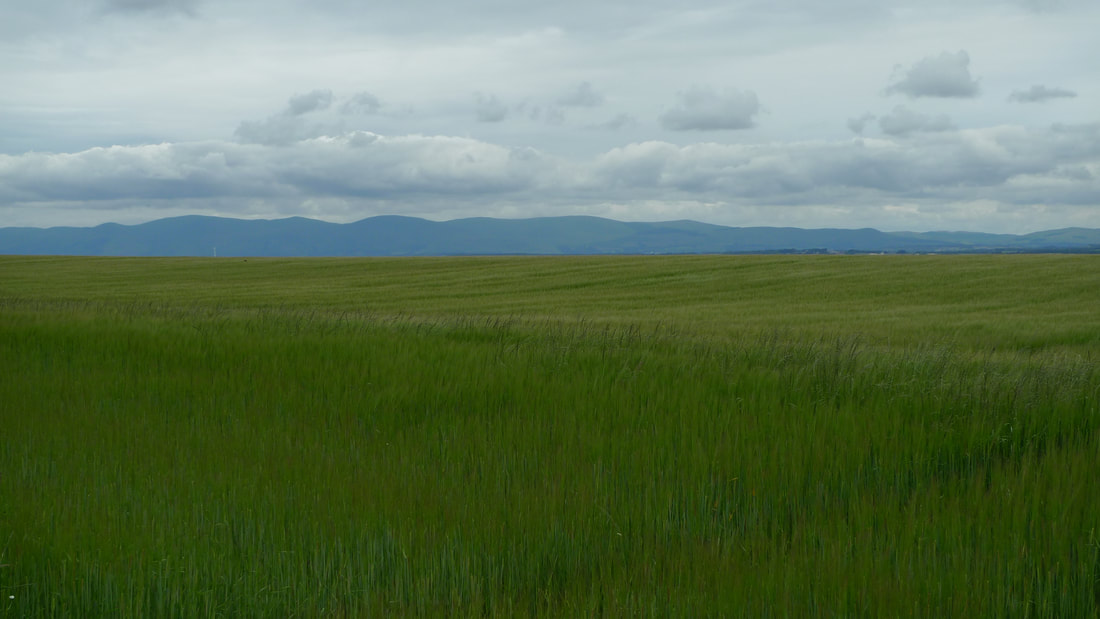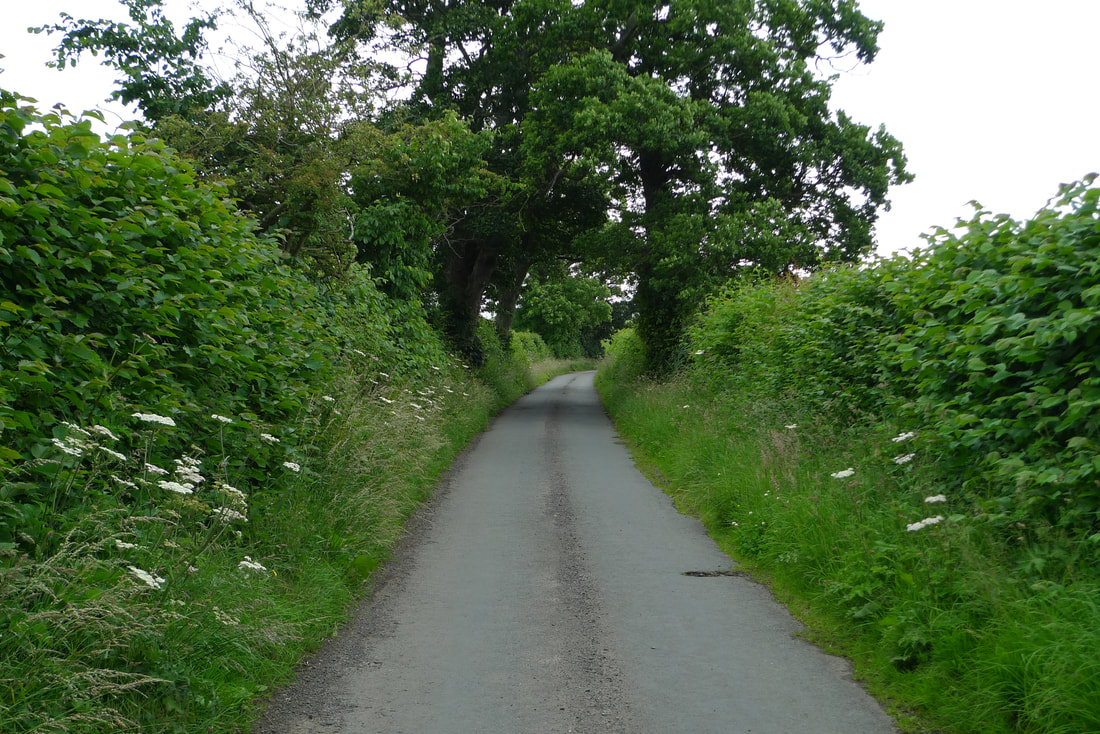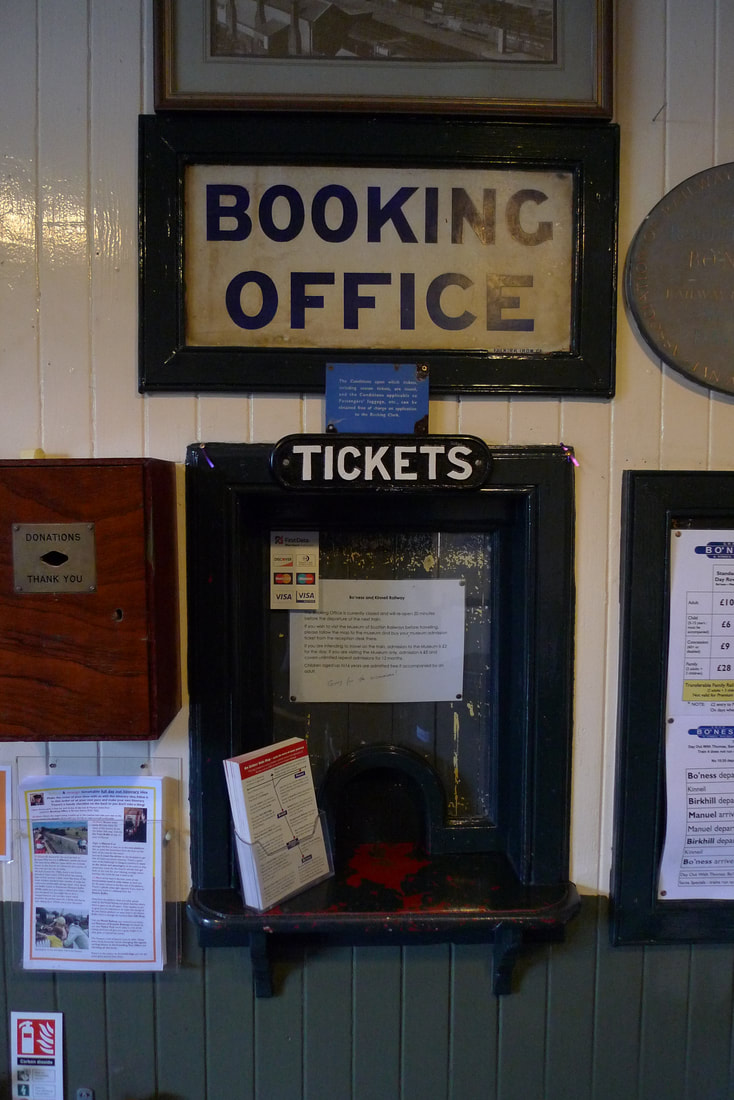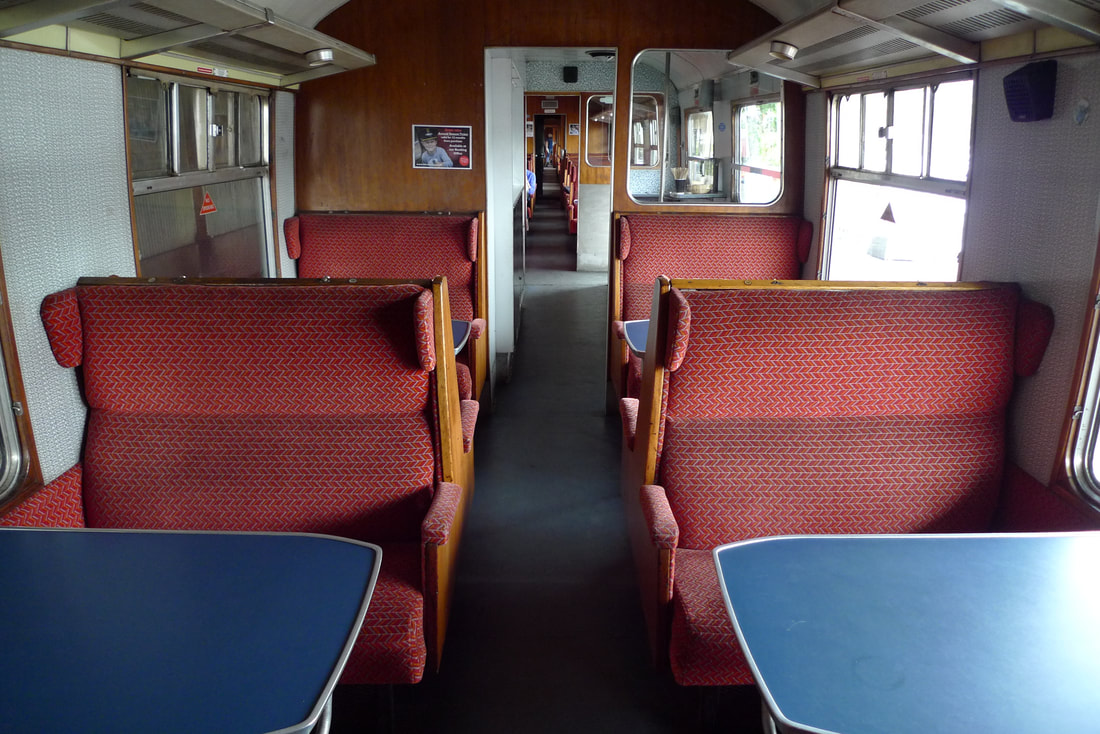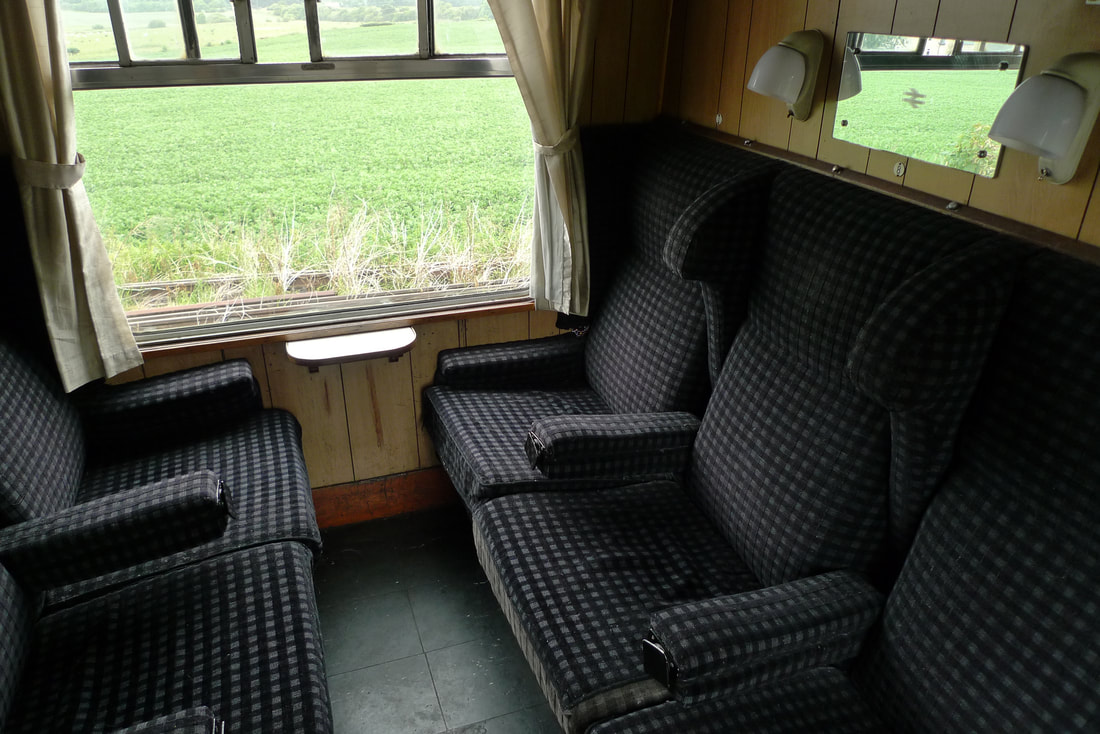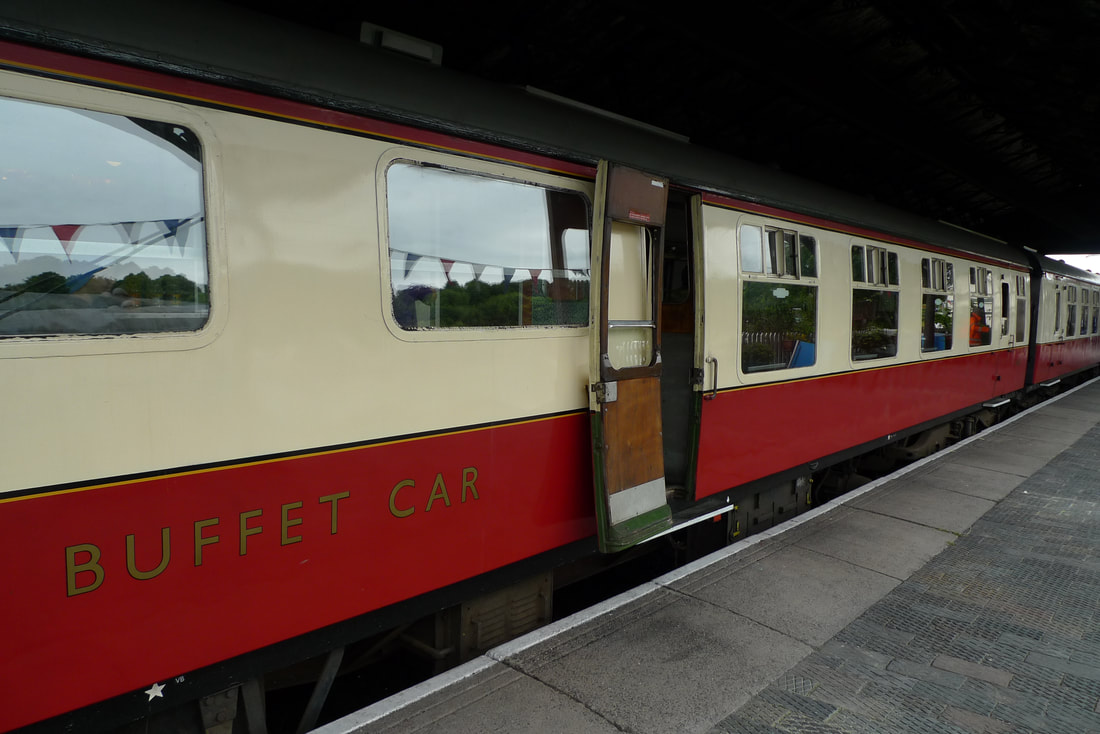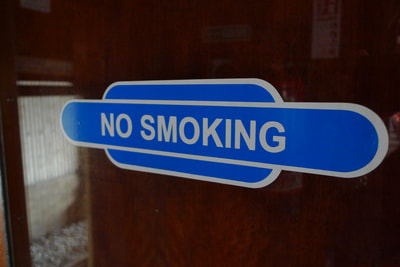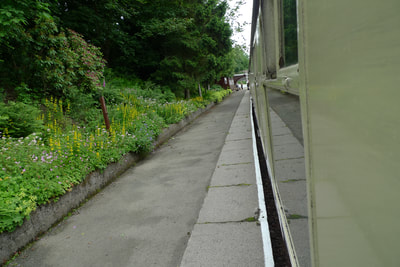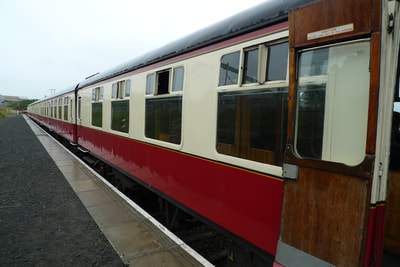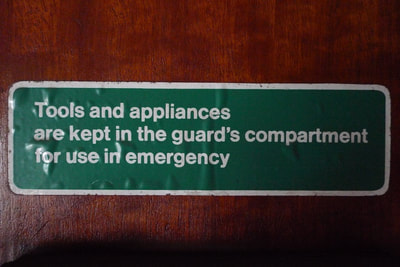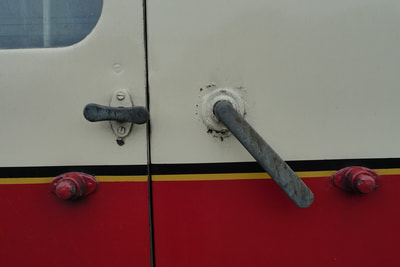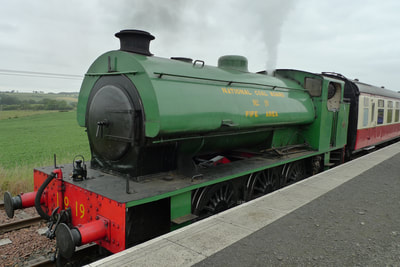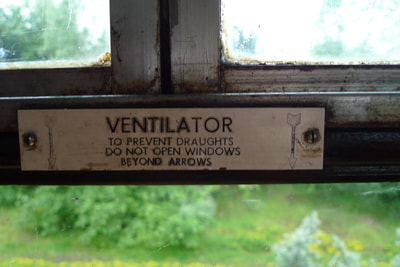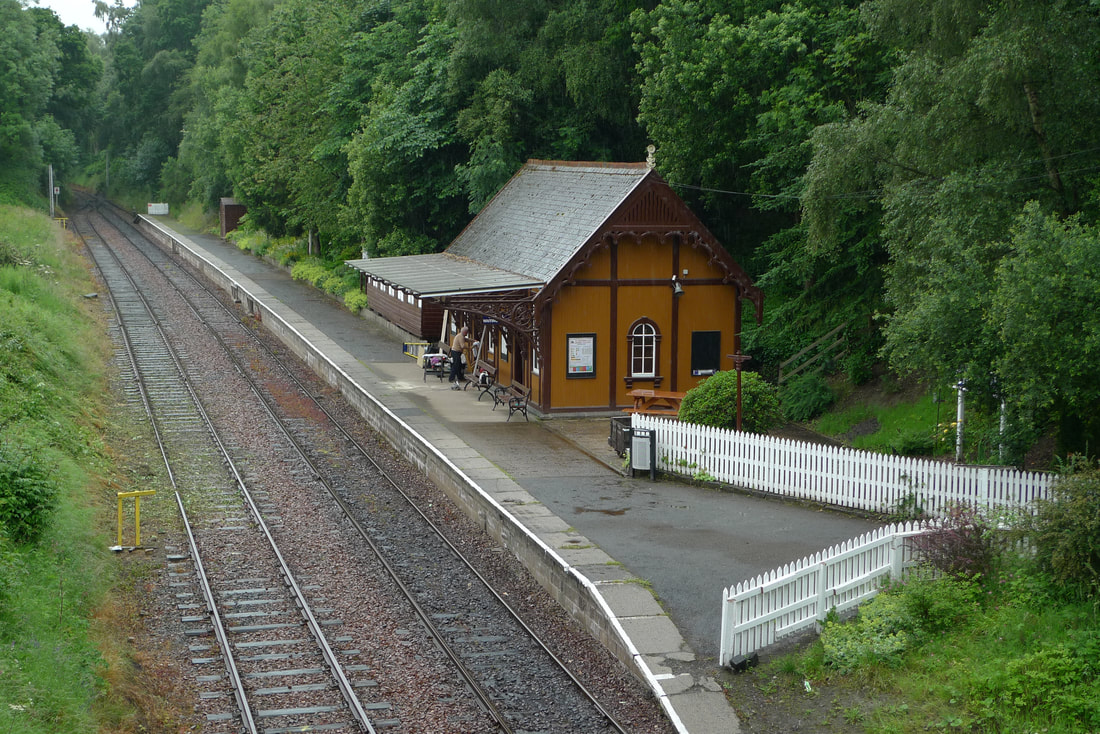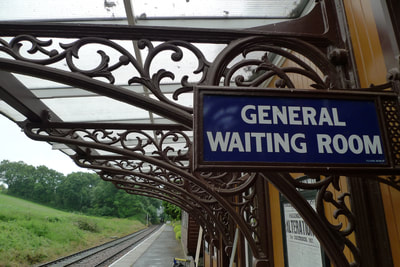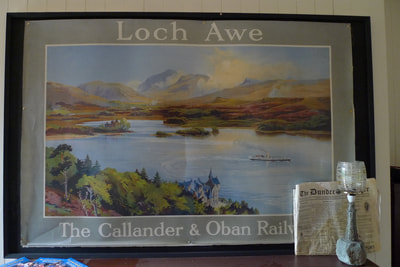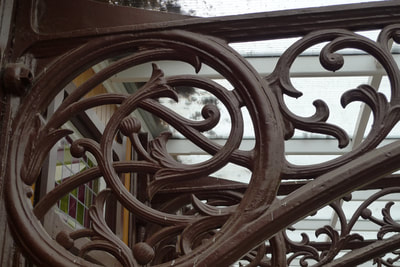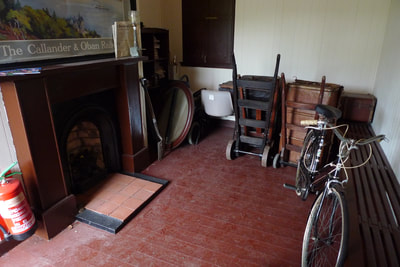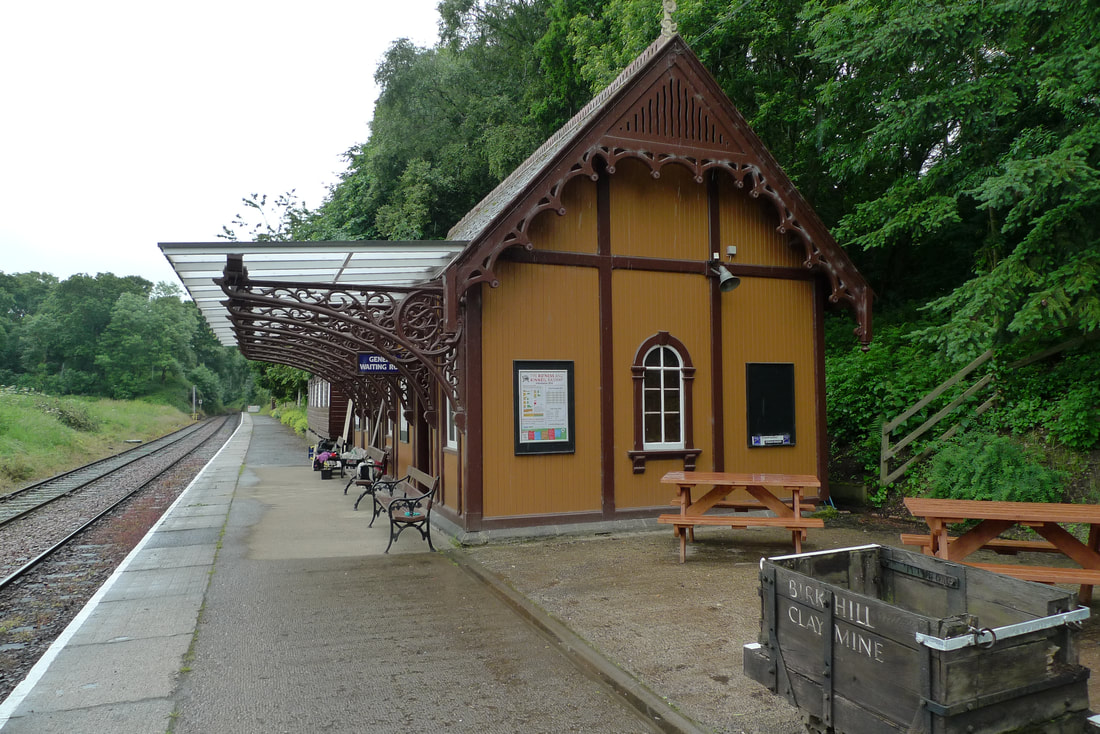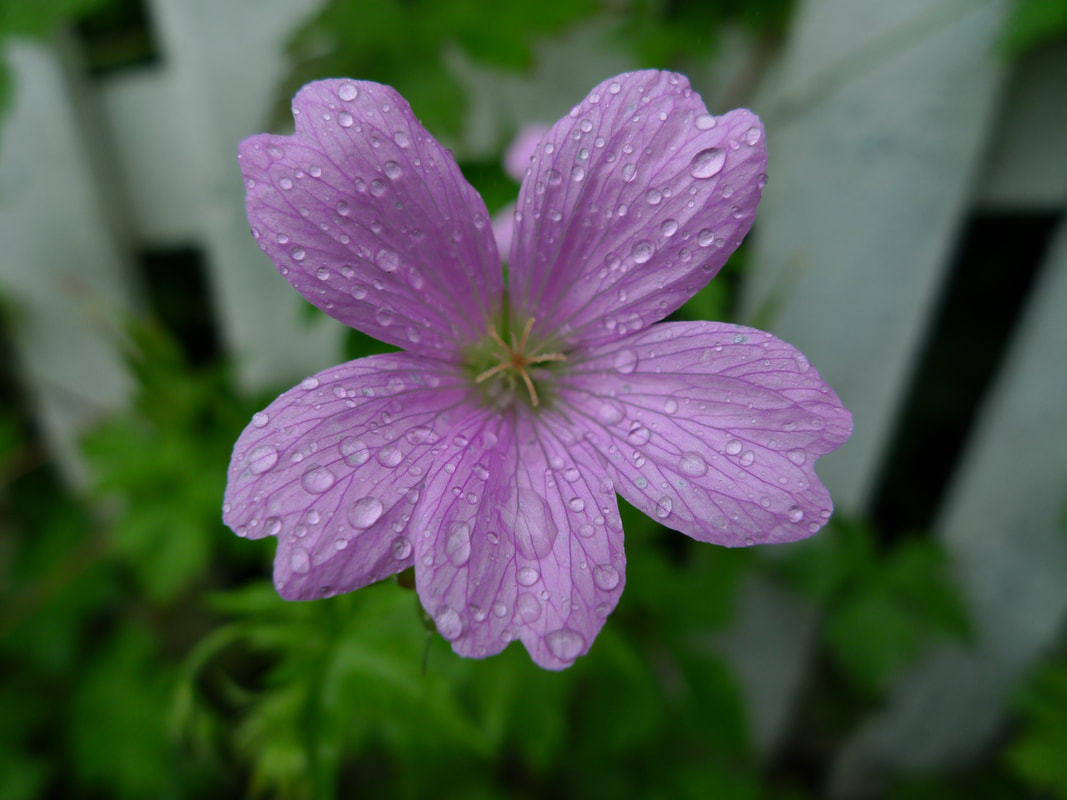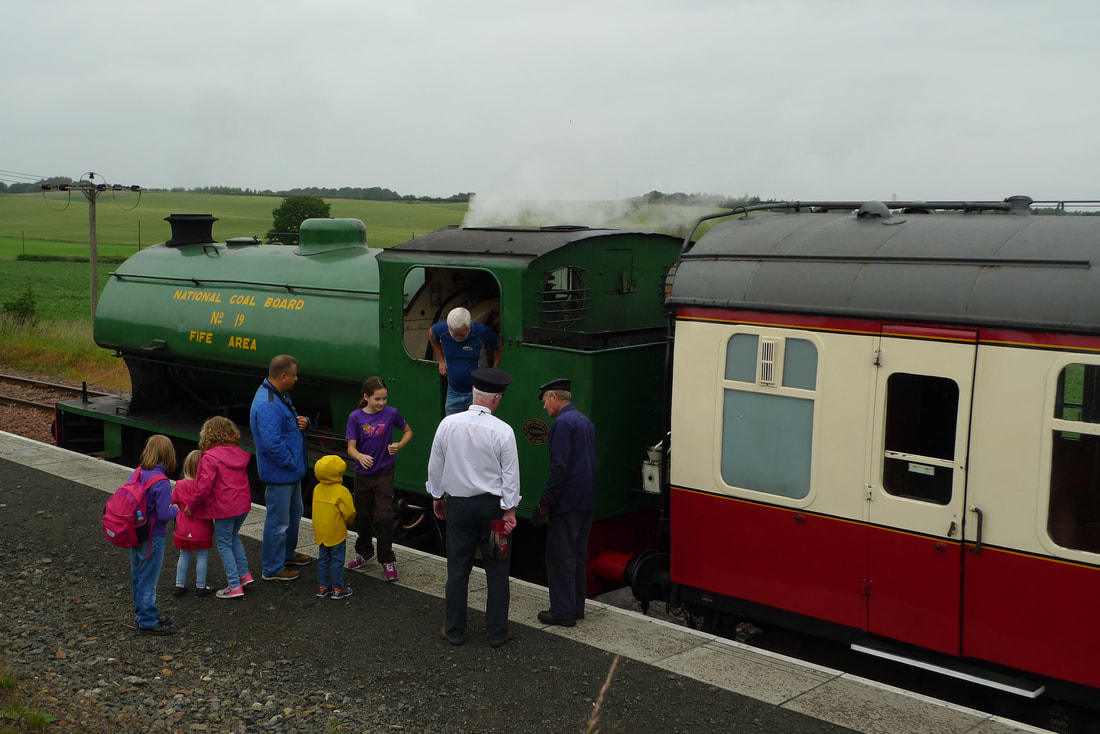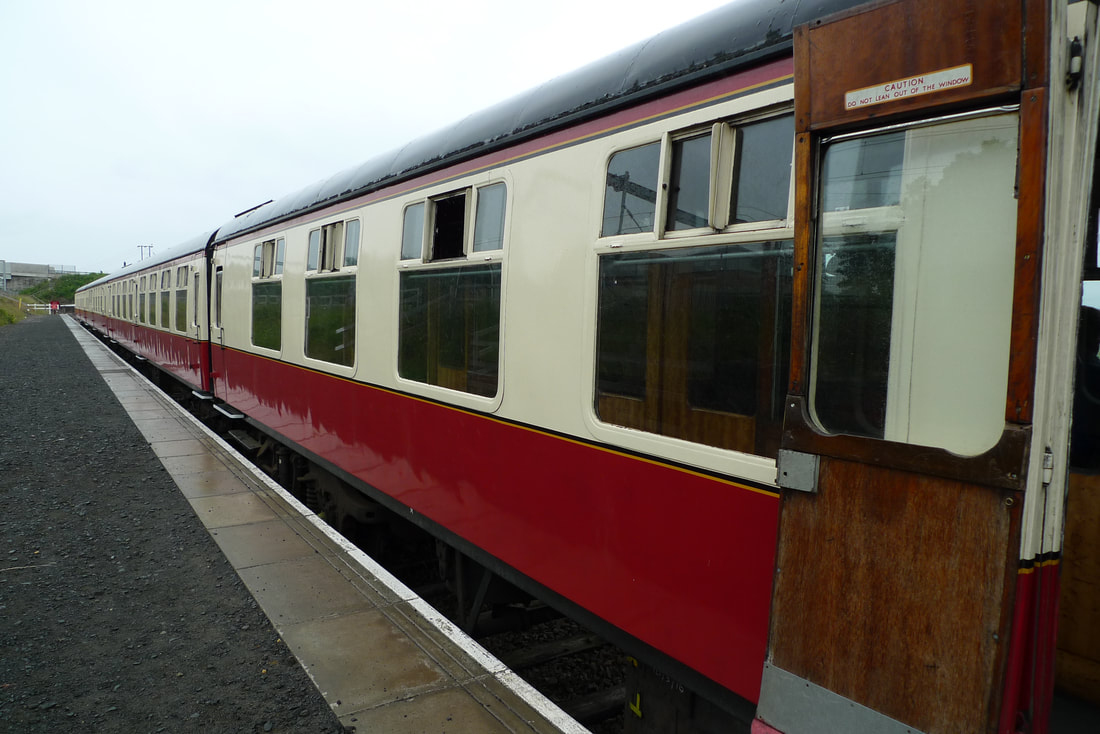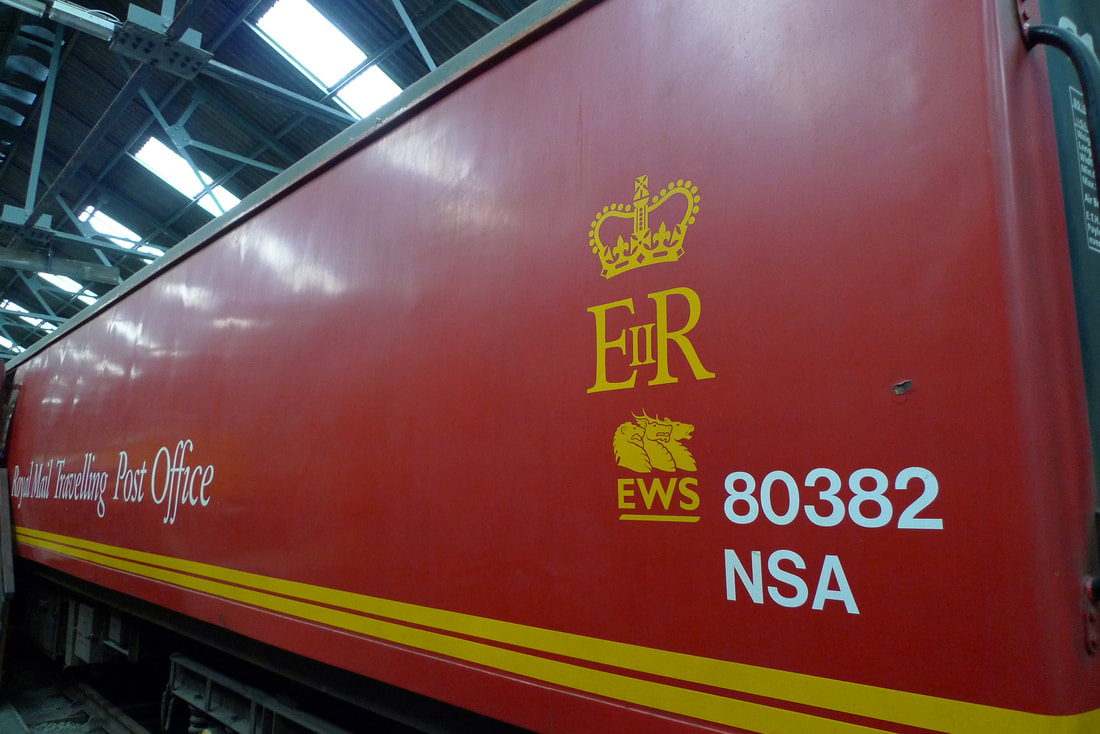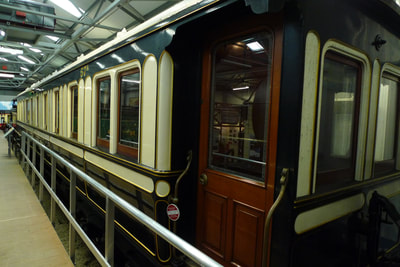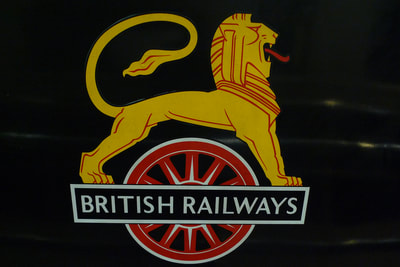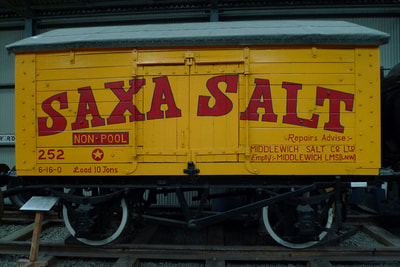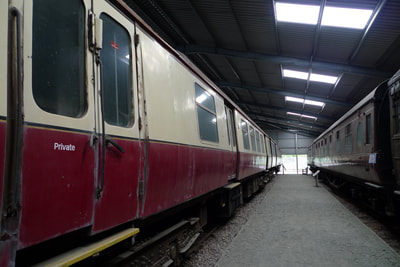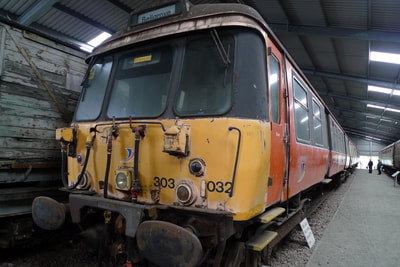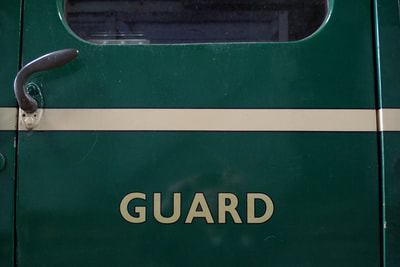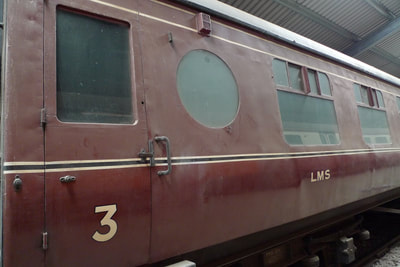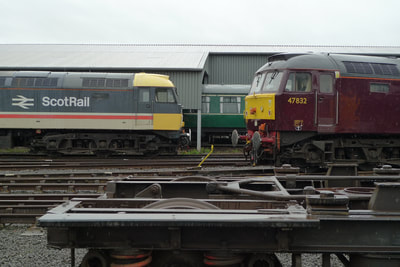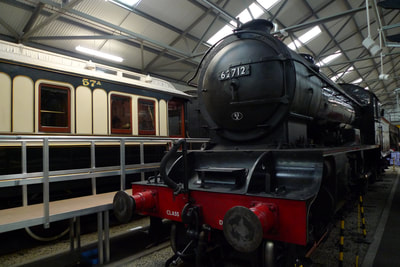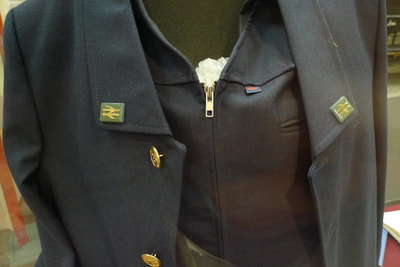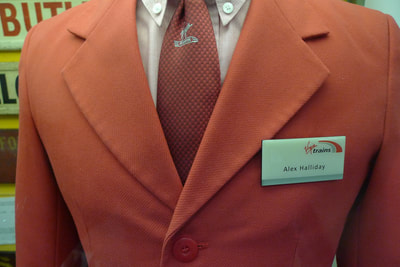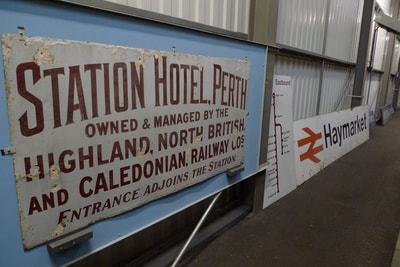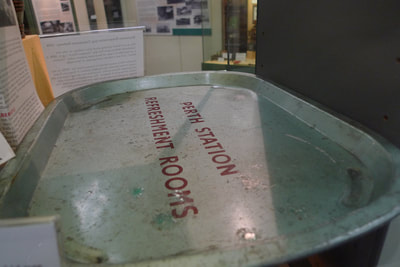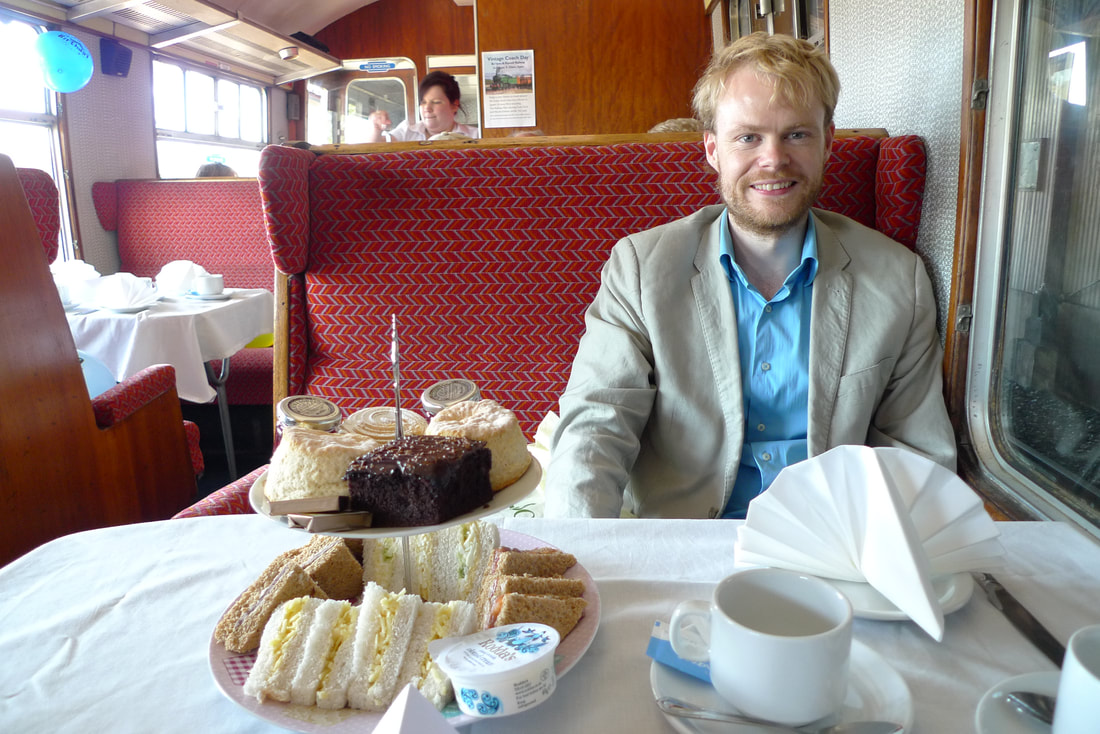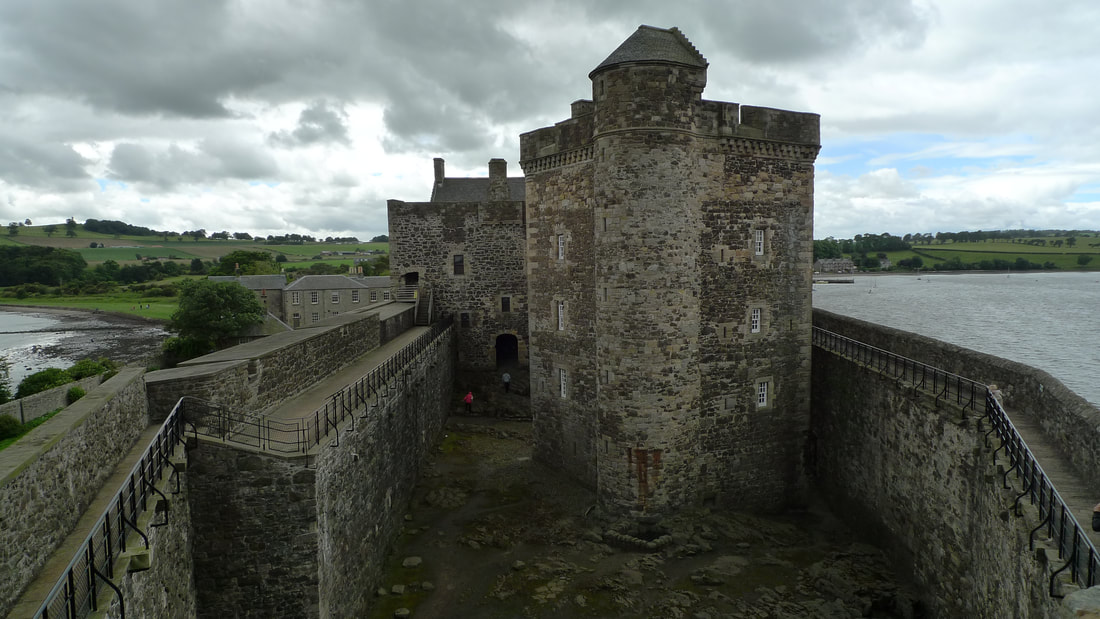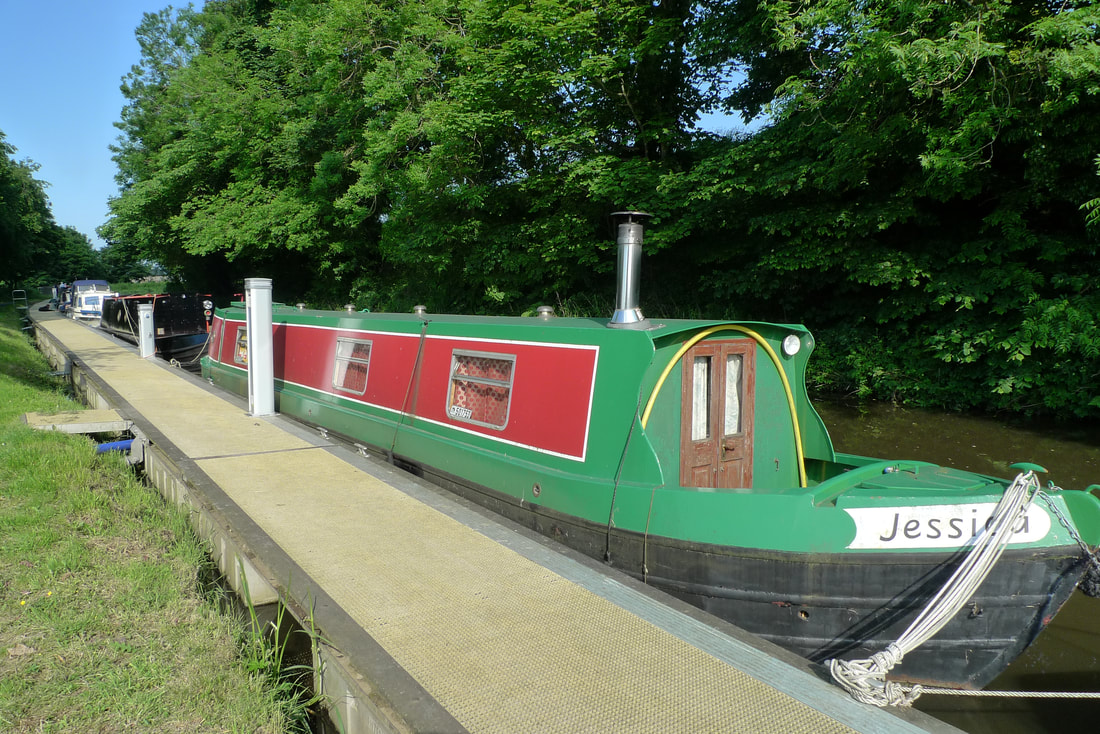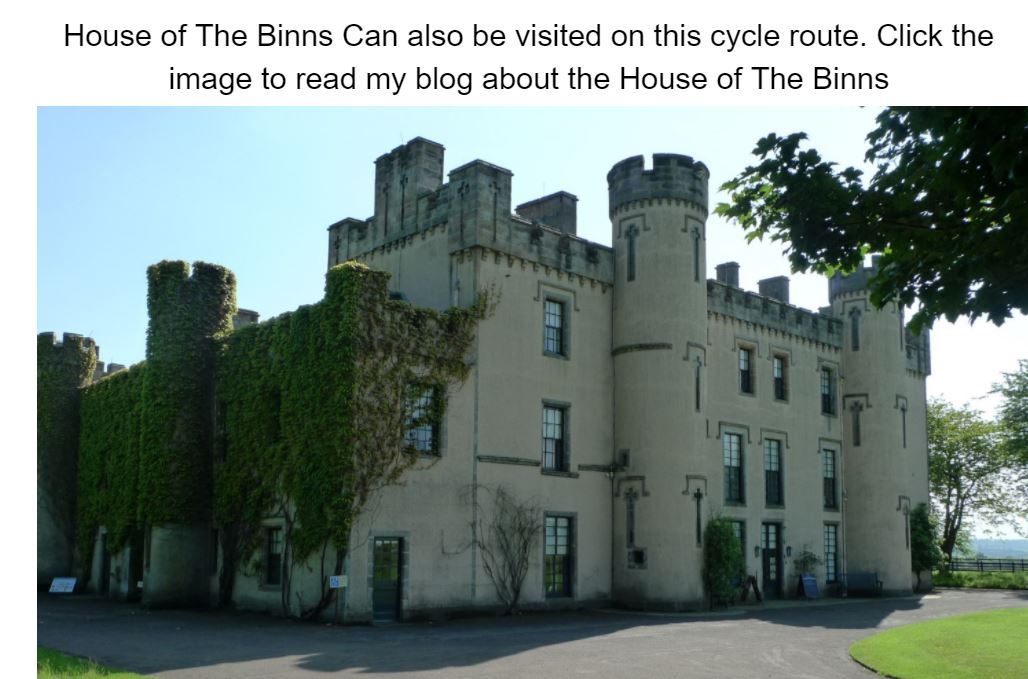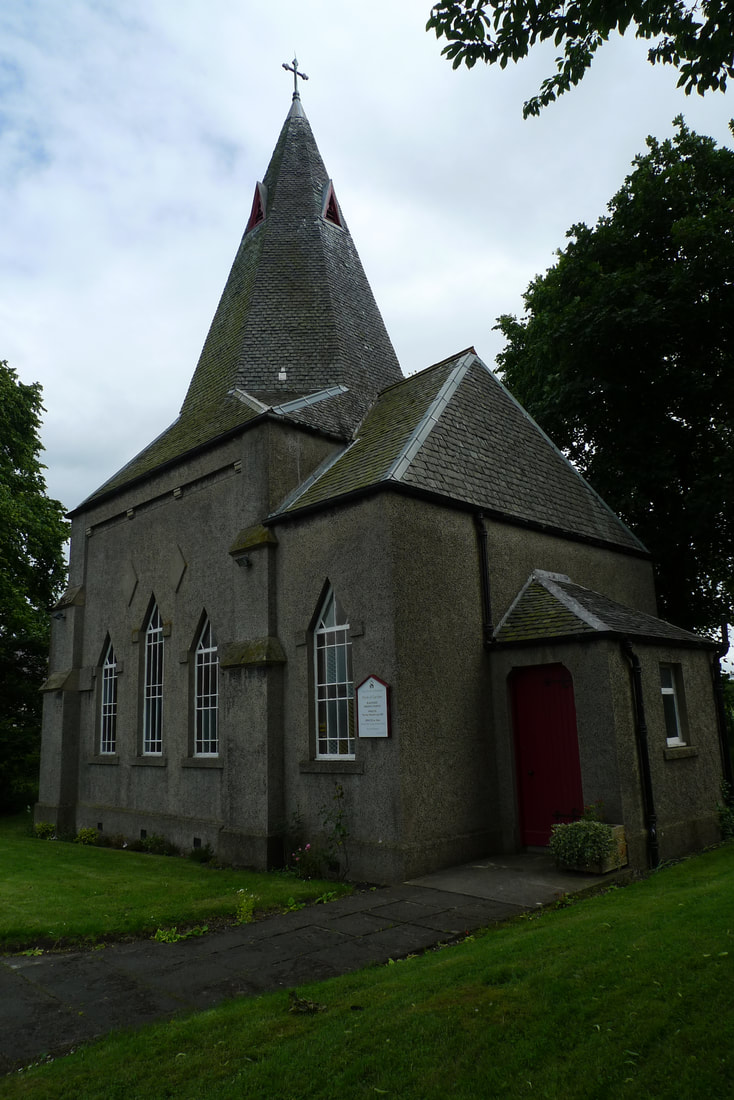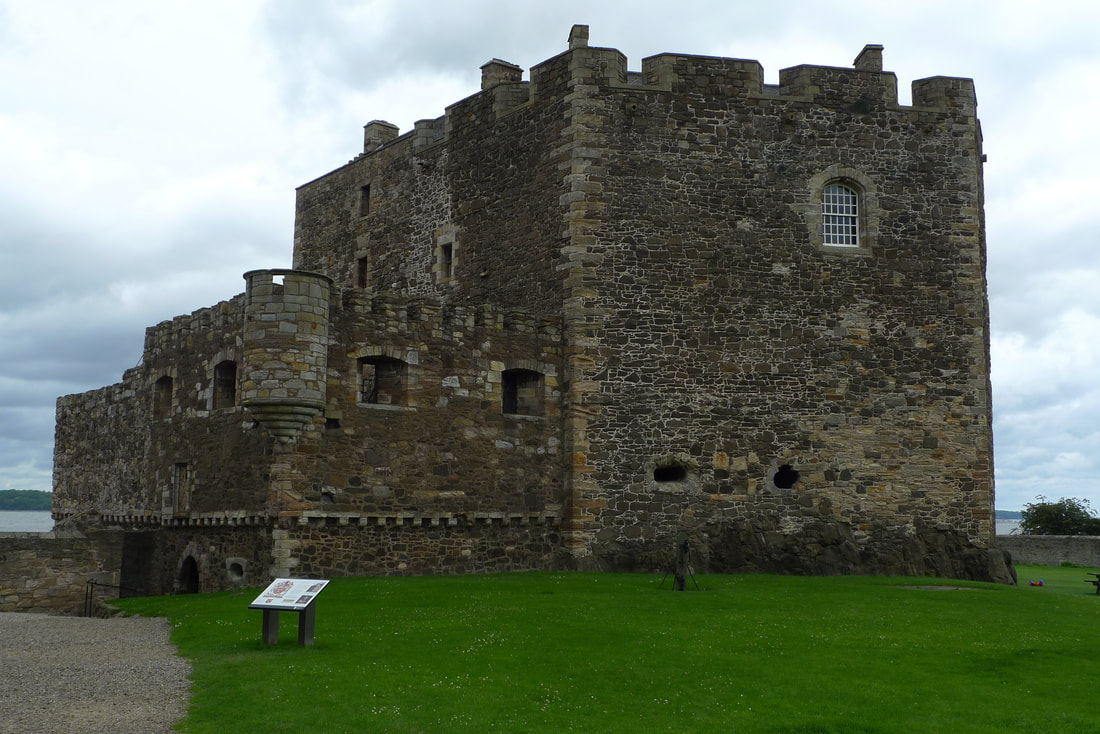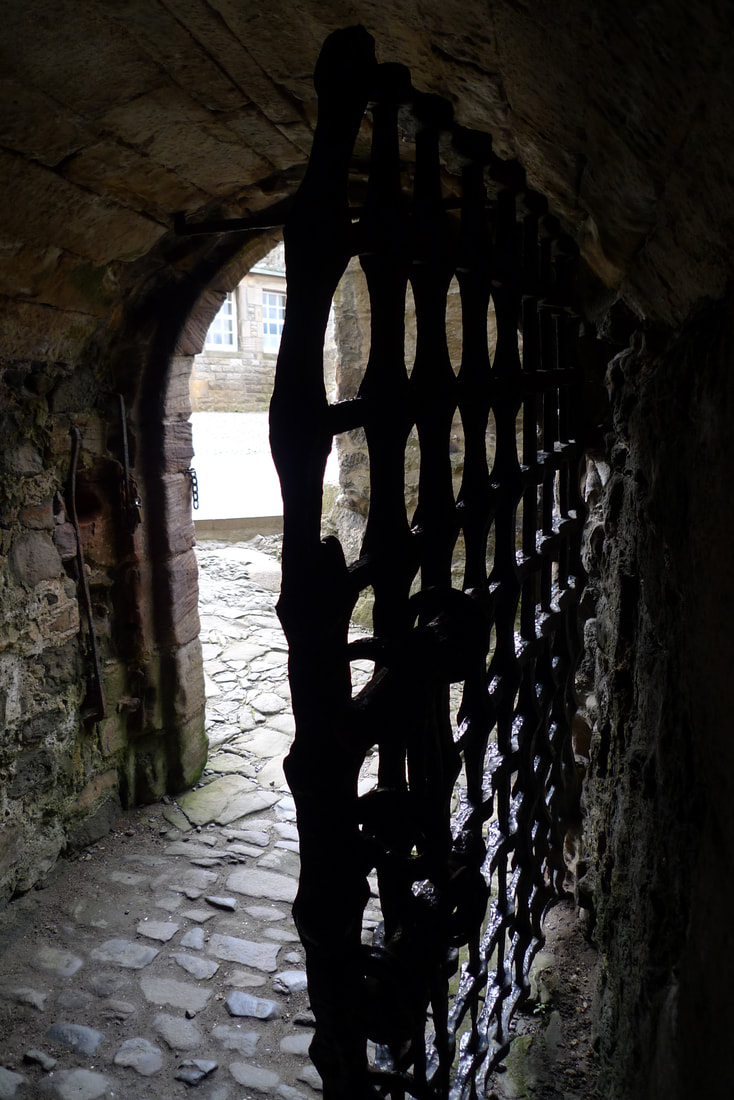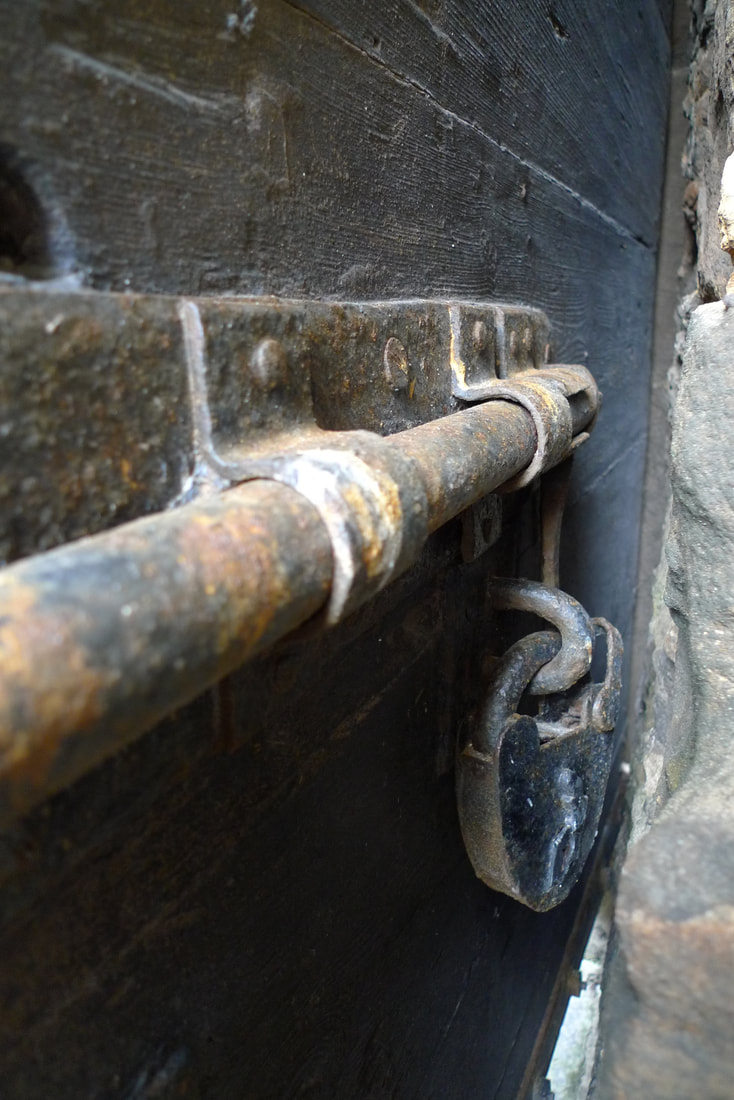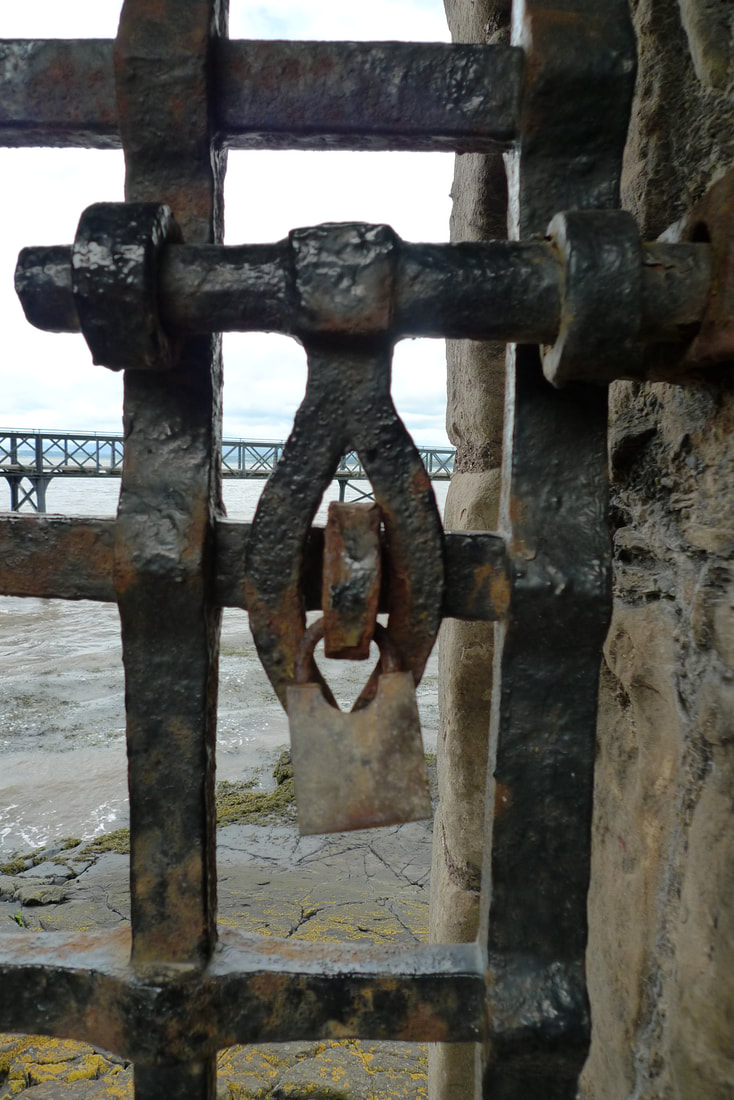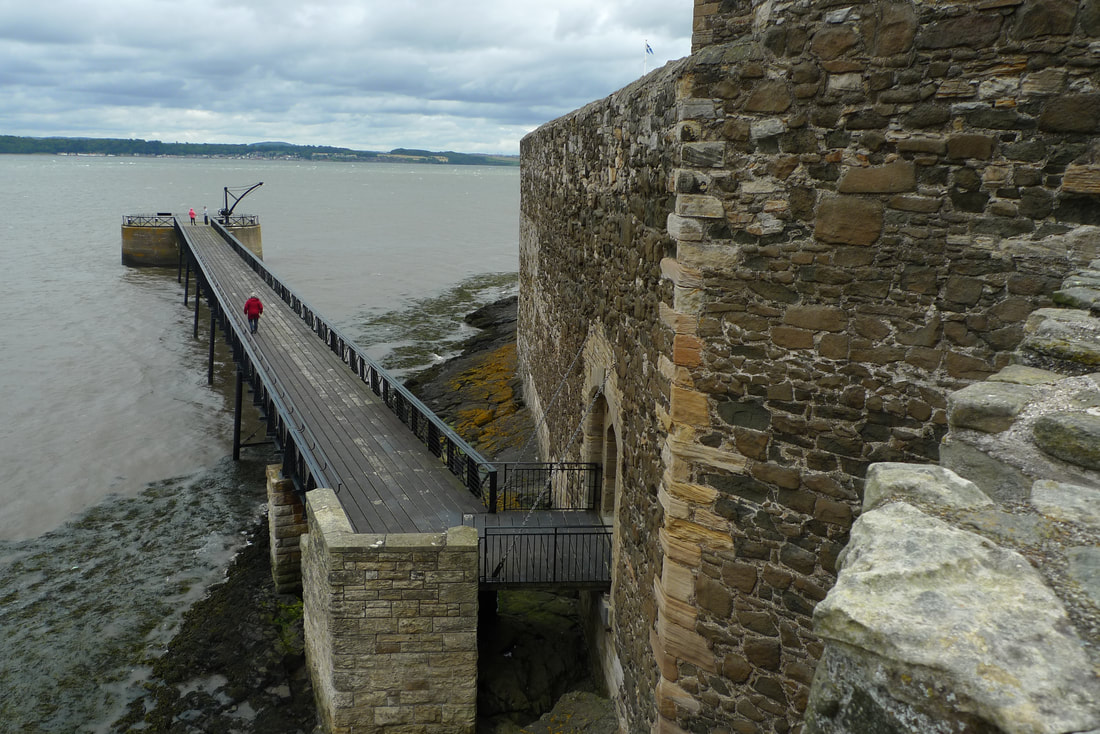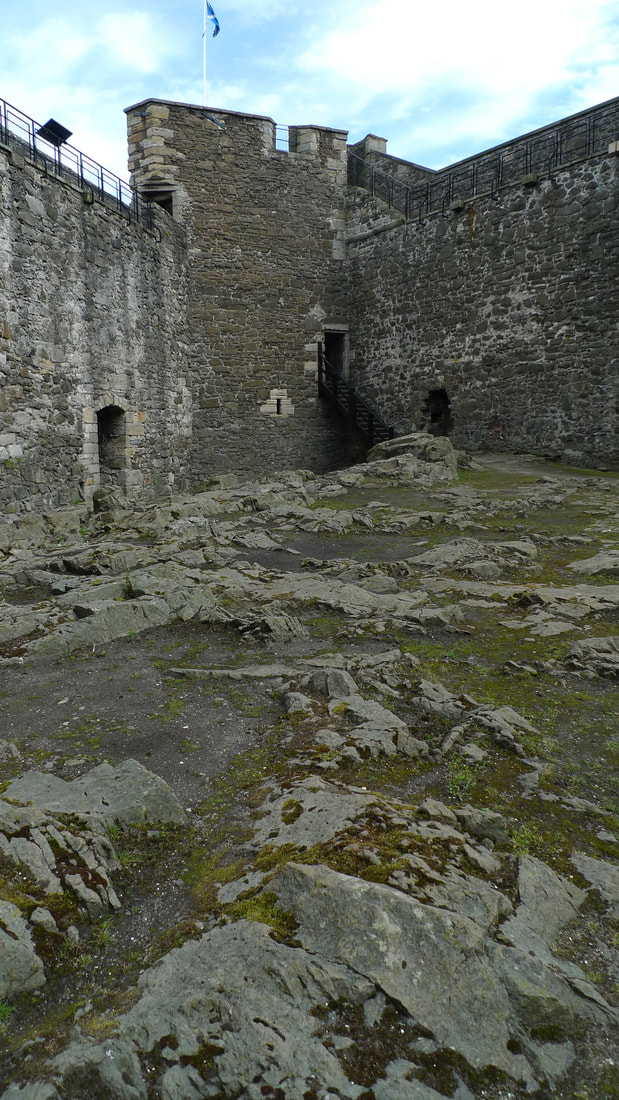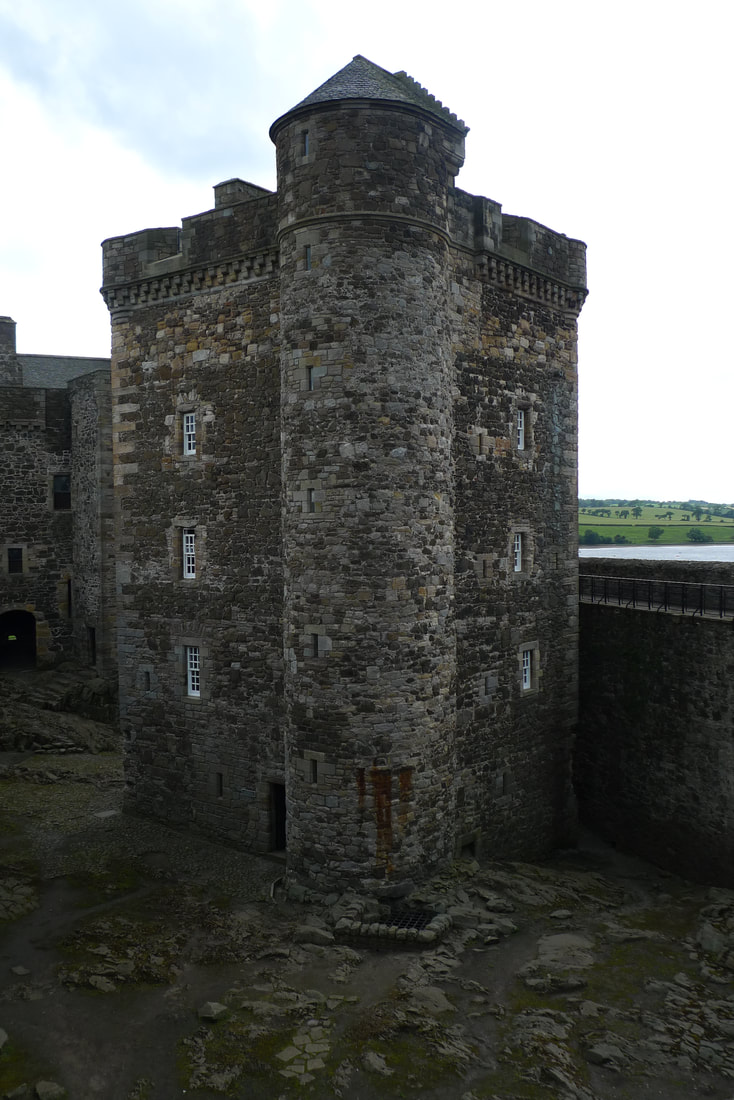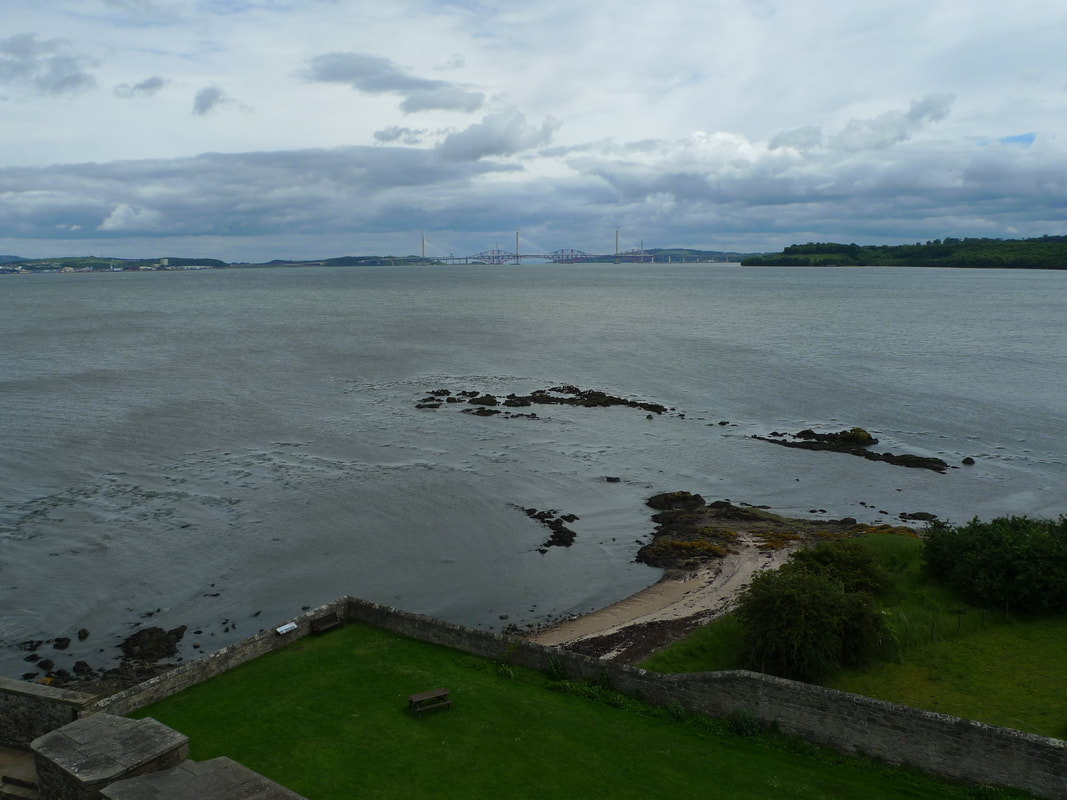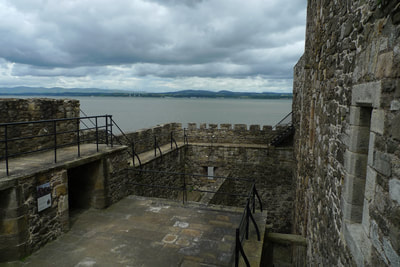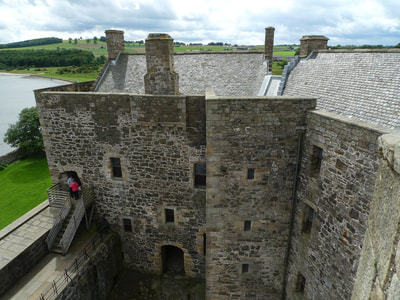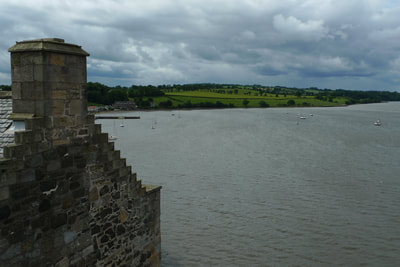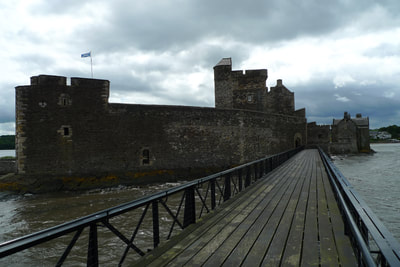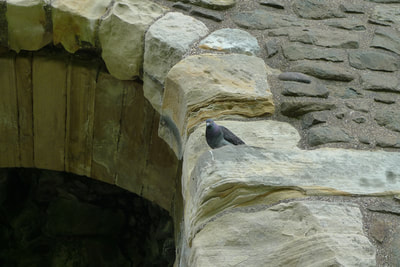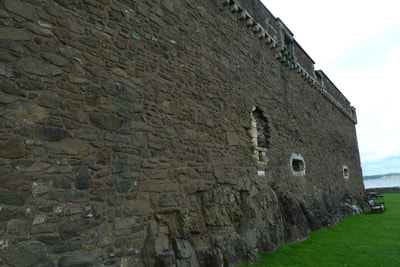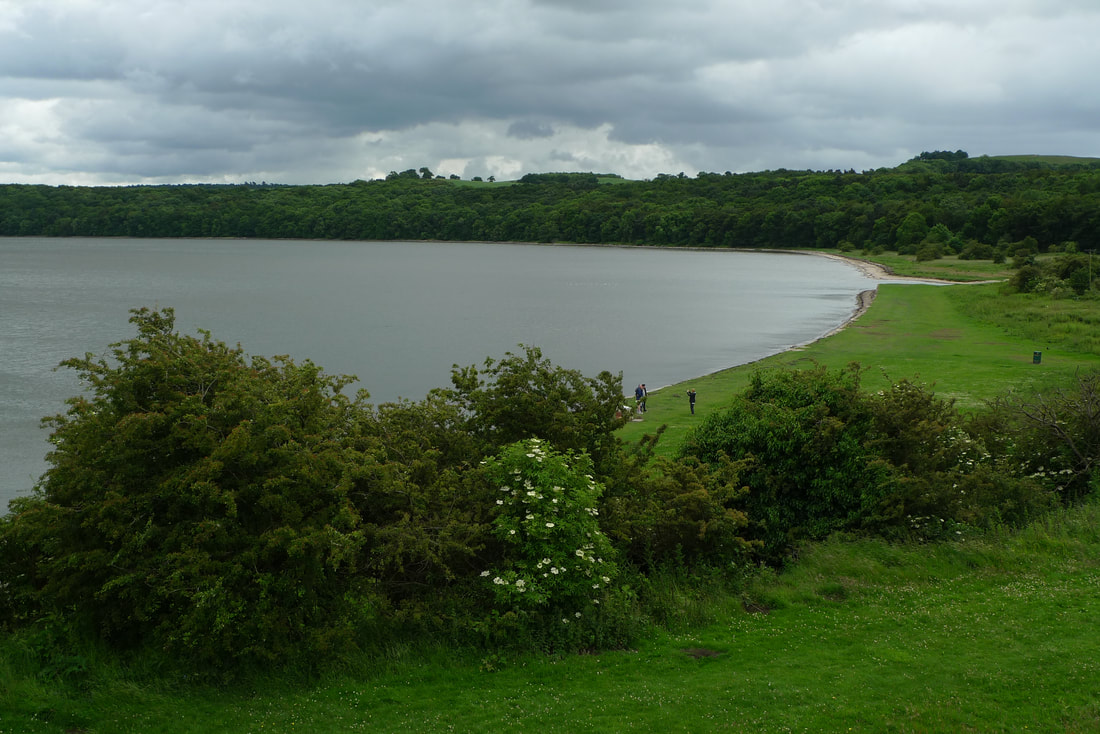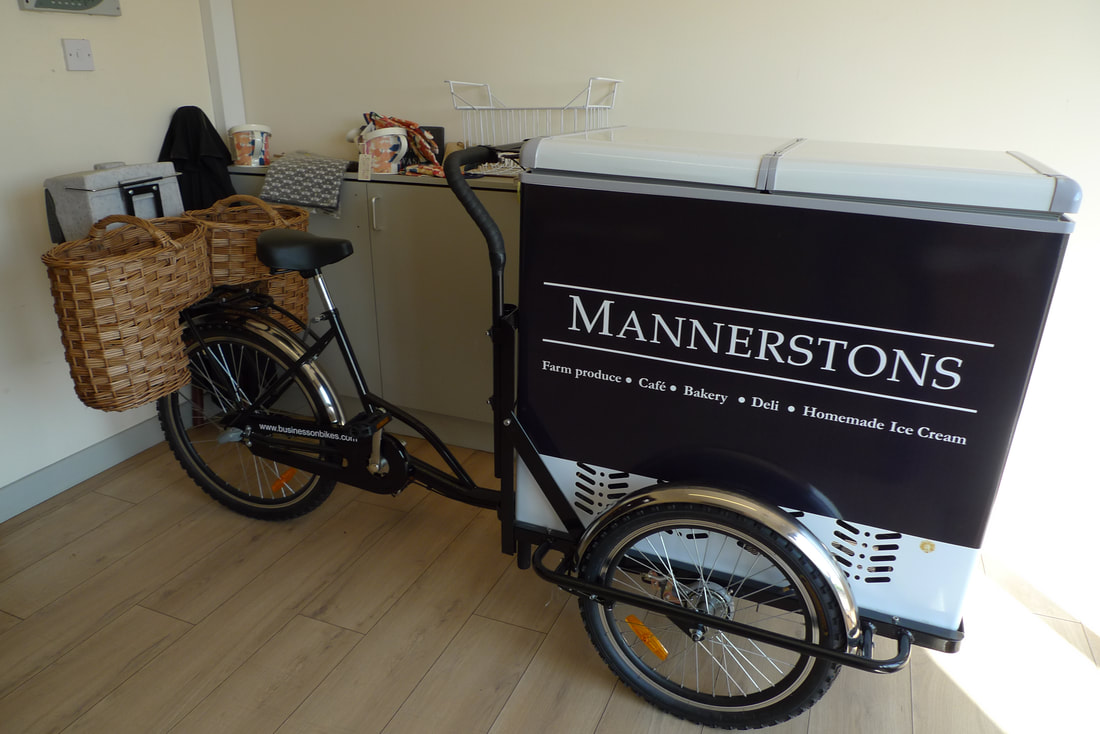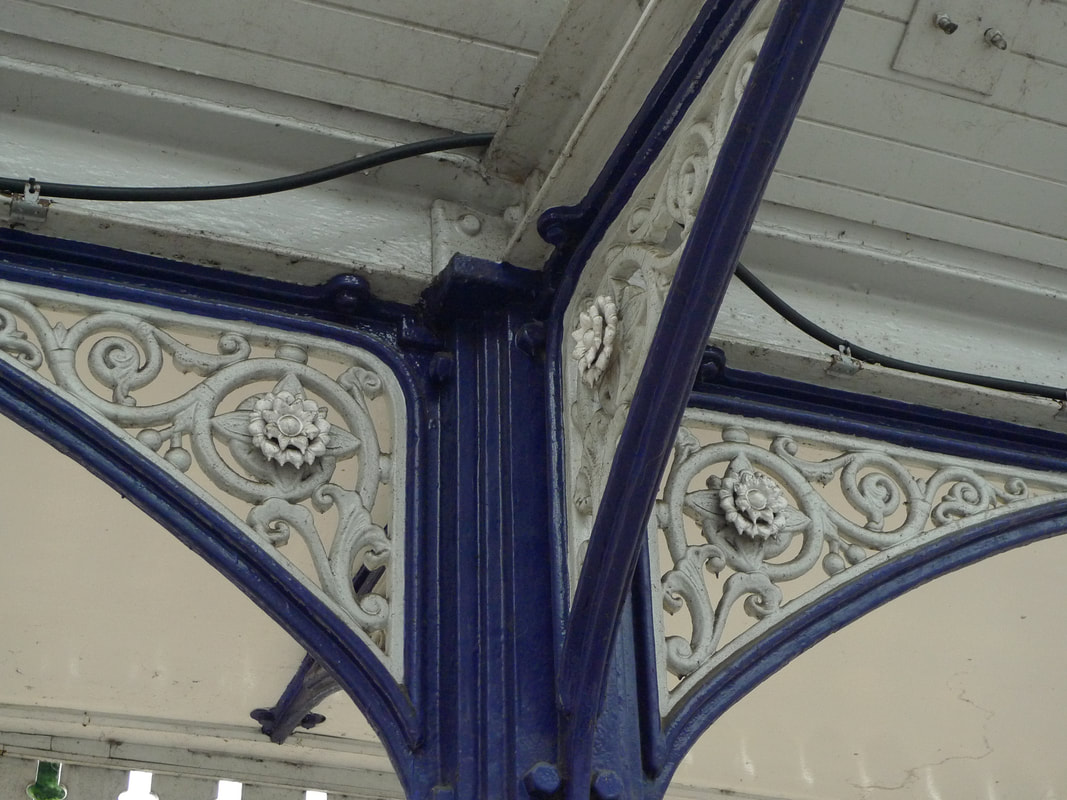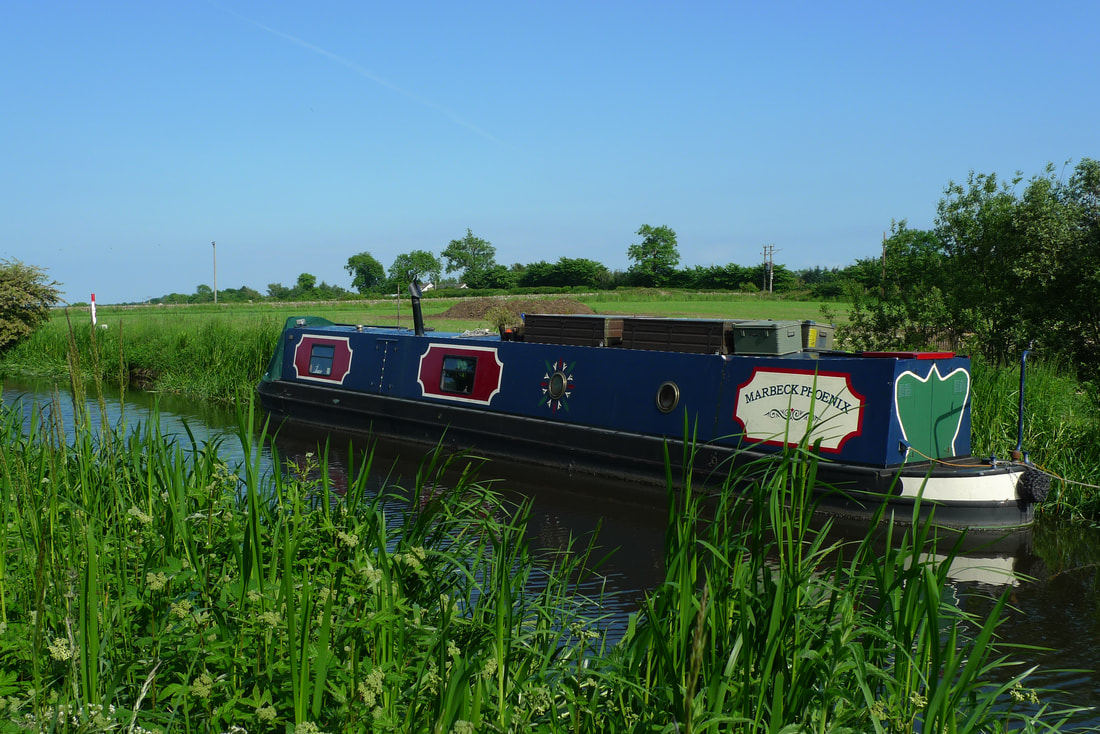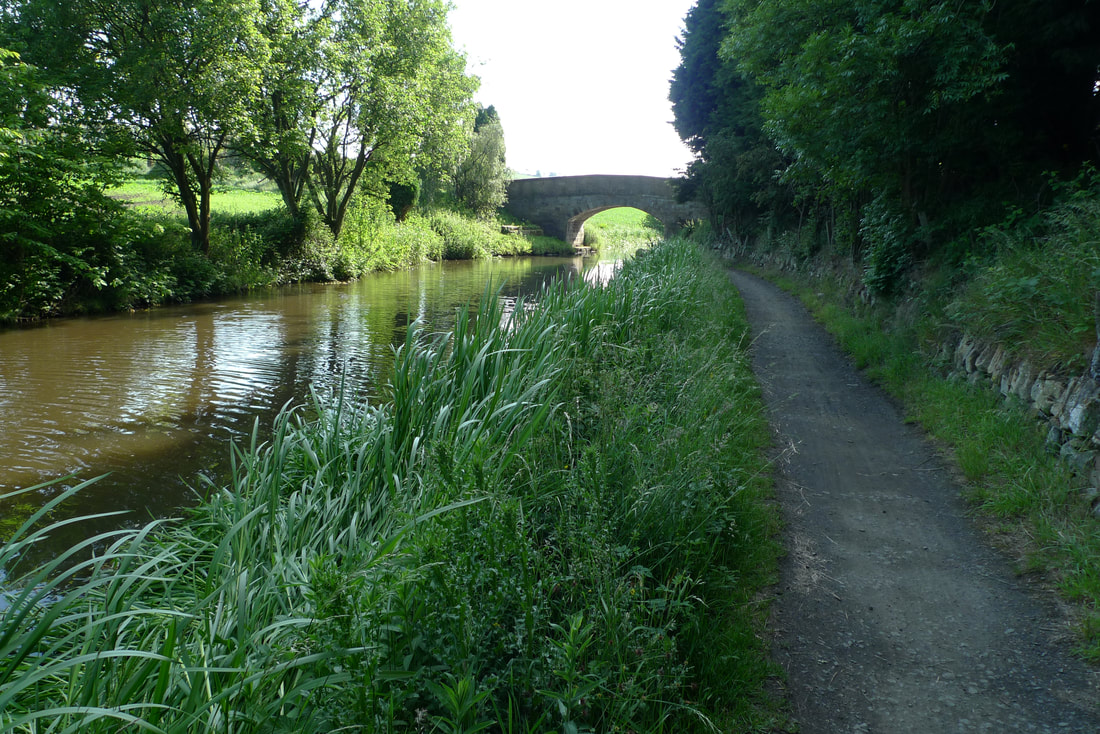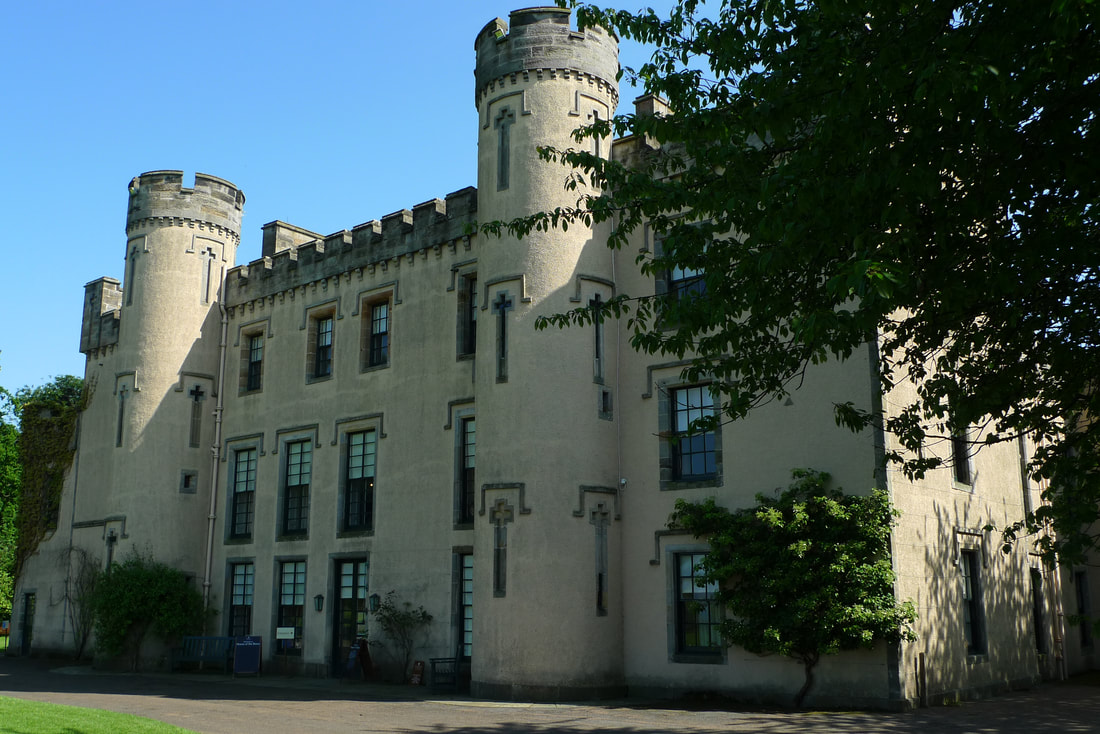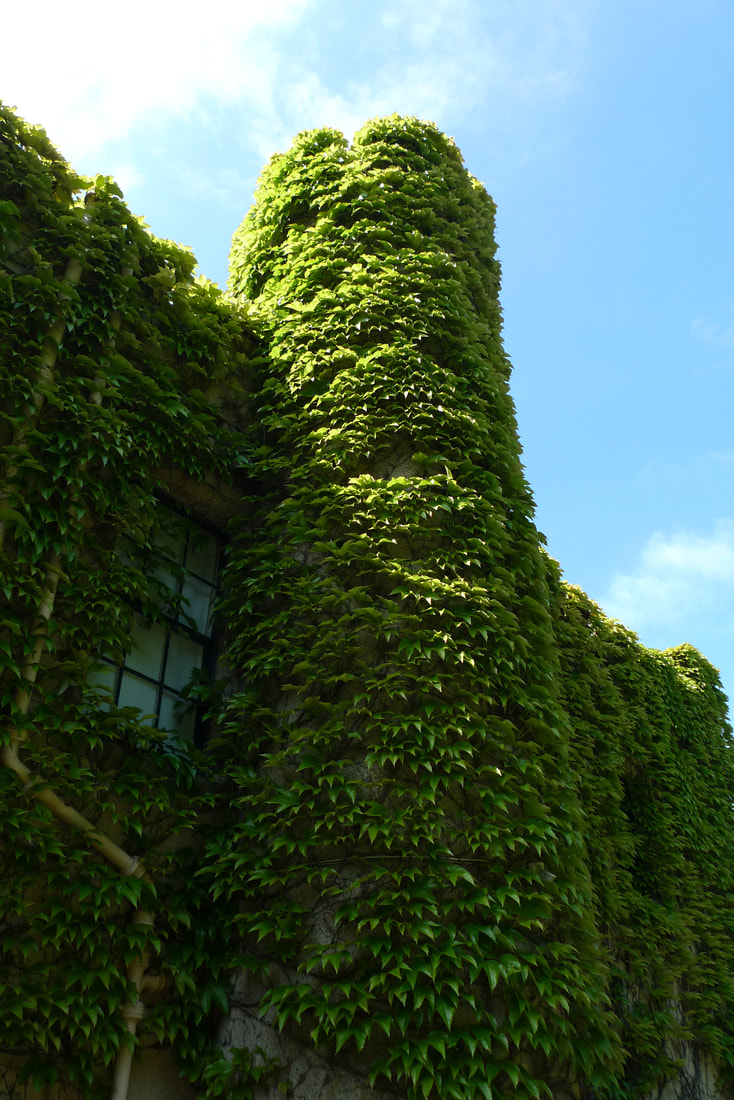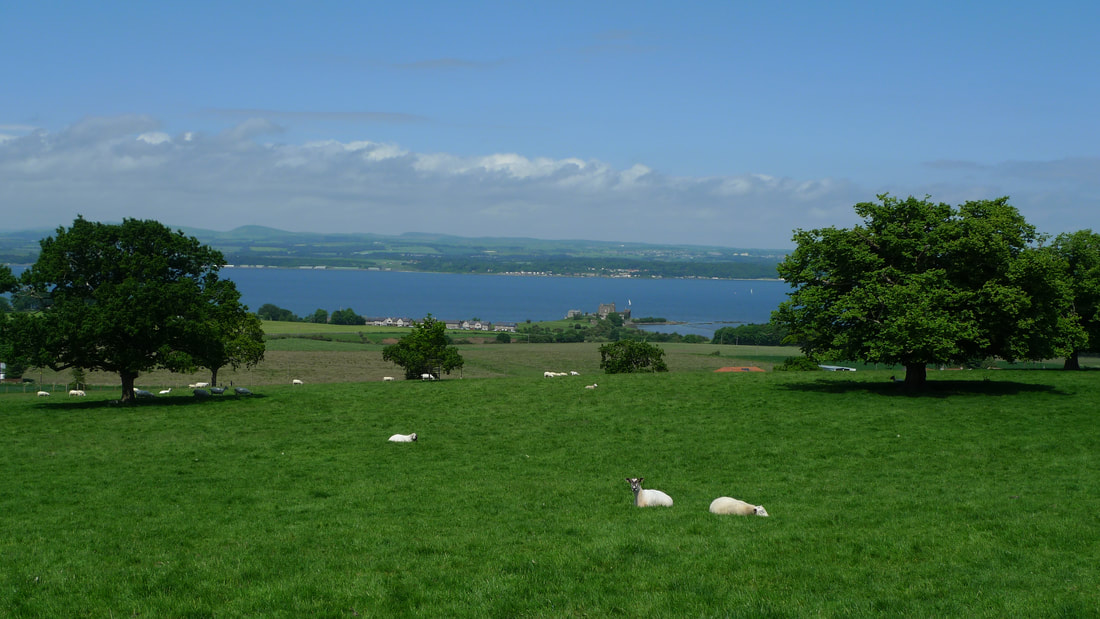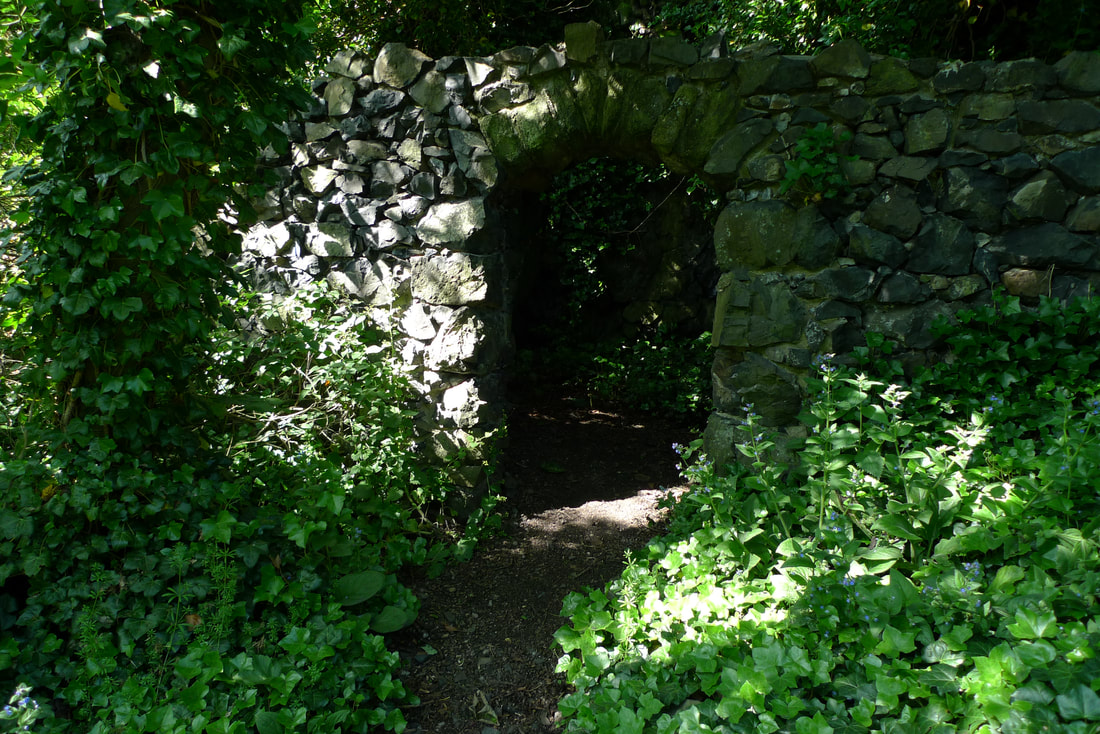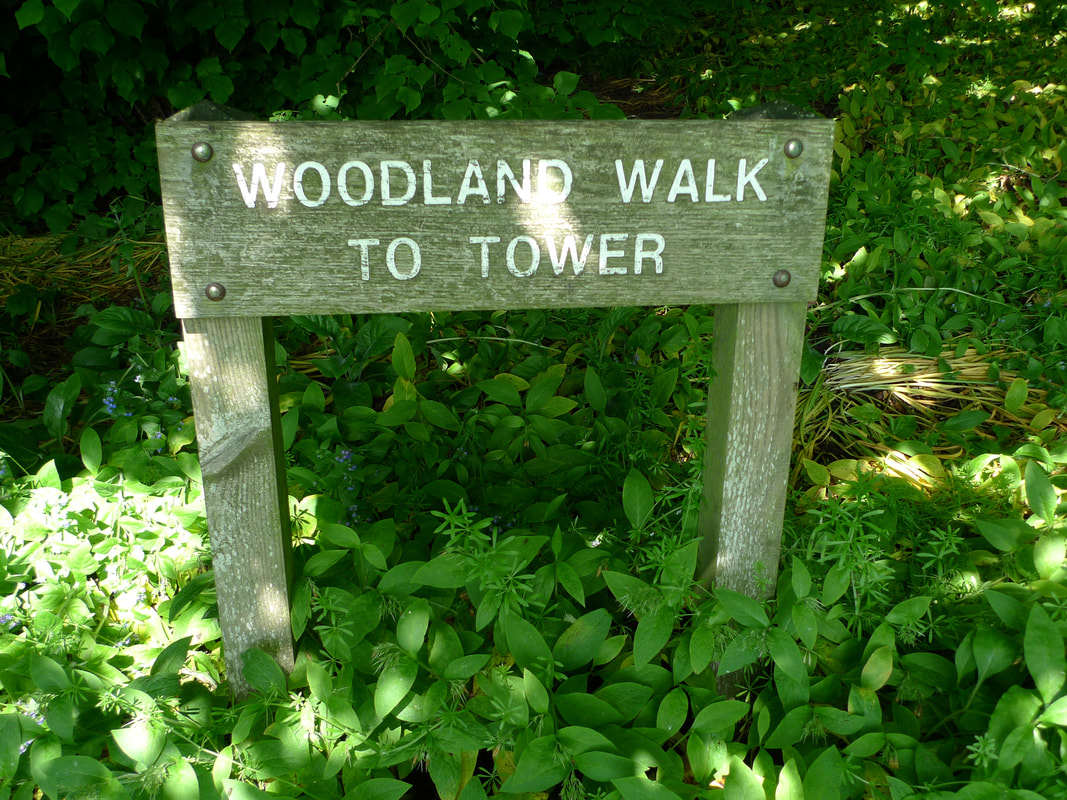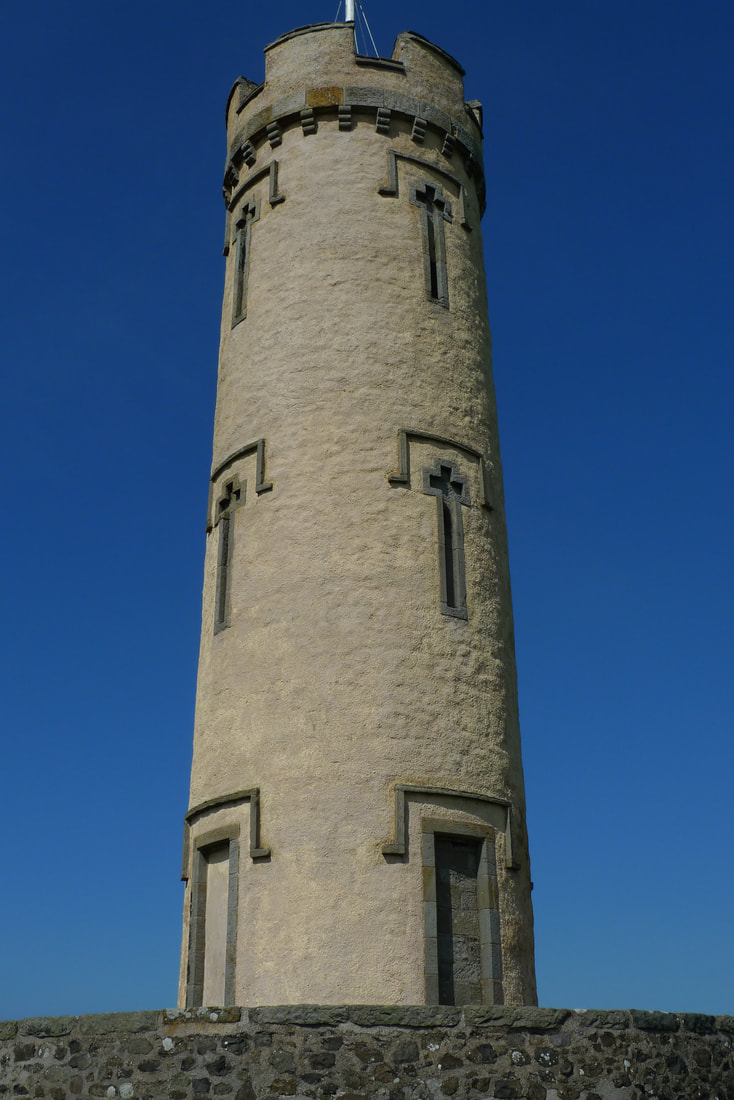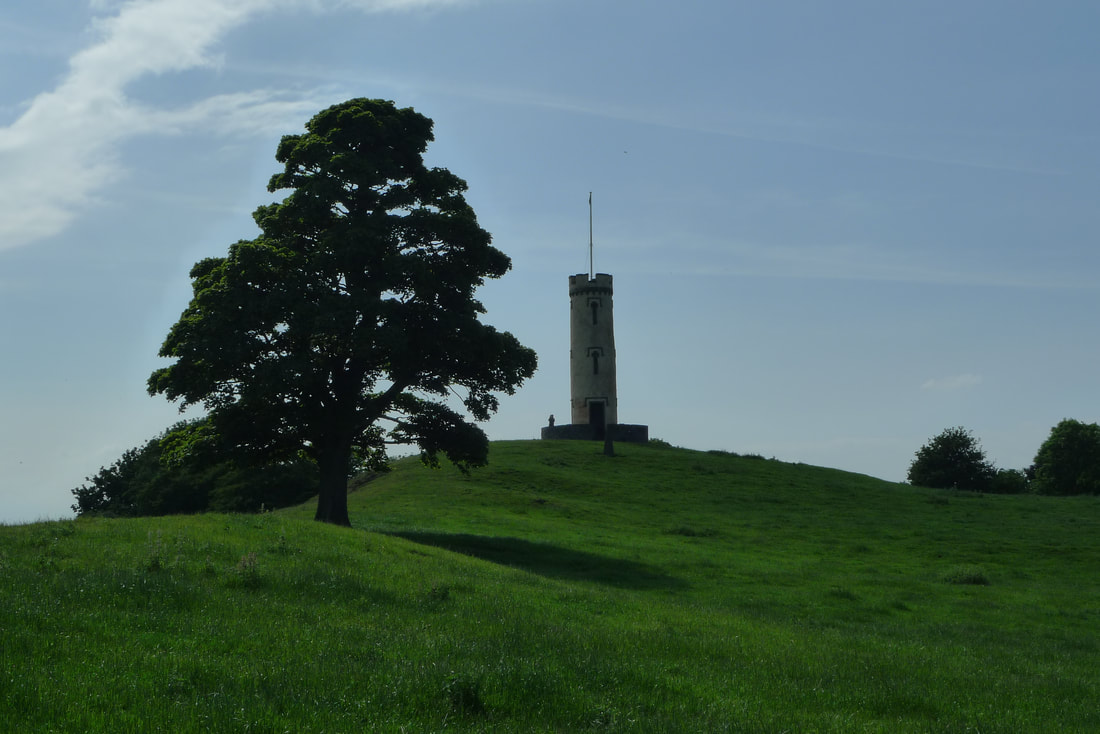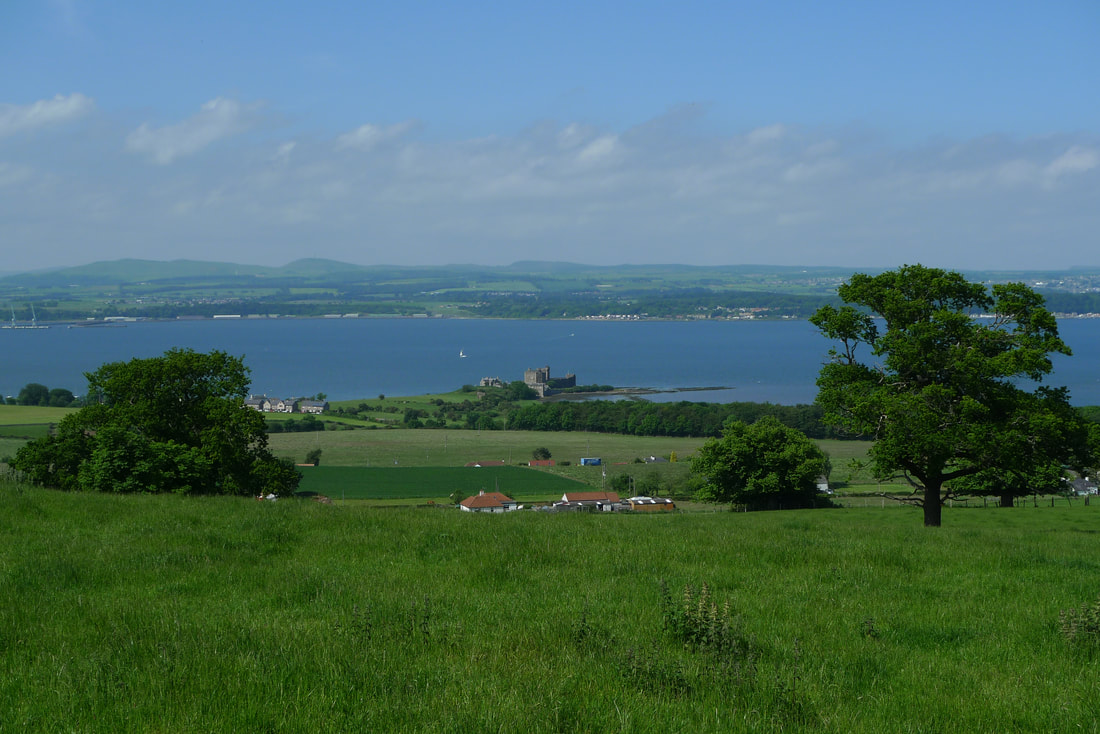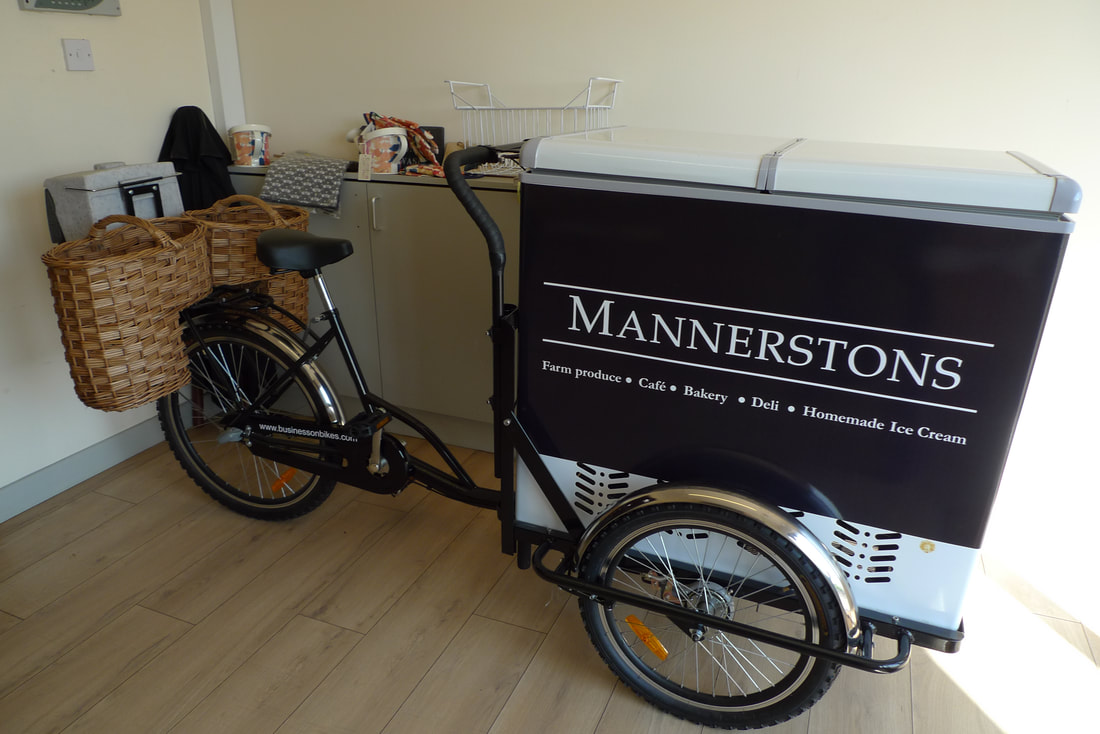|
Spacious carriages with comfy seats. Windows that open. Taking a stroll to the buffet car and sitting down with a coffee. Countryside views. If this is your idea of a relaxing train trip then come aboard the Bo’ness and Kinneil Railway. It is a few miles north of Linlithgow and you can ride in vintage carriages pulled by steam engines.
Highlights of this cycle route:
Take a train to Linlithgow Then Cycle 4.5 miles to Bo'ness
Linlithgow is only 20 minutes from Edinburgh, 30 minutes from Glasgow. Leave the station by means of the lane that takes you down to the High Street. Turn right here, through a roundabout, to head along Blackness Road, passing the Regent shopping centre. It can be a busy road, but you are only on it for a short distance. Turn-off Blackness Road onto the path that goes around Linlithgow Loch. From here there are good views of Linlithgow Palace. You soon turn off the loch path, via a gate, and onto a minor road. This immediately feels rural and there is a strong sense of leaving behind the bustle of the town. This is country cycling at its best with bird song, tranquility and hedge-lined roads. I passed a field of cabbages with a scarecrow standing guard. There are fantastic views of the Pentland Hills and down to the Forth.
The route ends with a long descent into Bo'ness, so bear this in mind when making the uphill return. This is an A-road, but I did not find it to be busy and at the bottom of the descent it becomes suitably wide for cyclists and vehicles to share it comfortably.
Leave Modern Life Behind What I love the most about heritage railways is that they transport you to a different era. They are a fantasy of a perfect past, sometime in the 1950s, when Britain’s railways were supposedly at their best. It is like a theme park. You can forget about what is on your mind that particular day and totally immerse yourself in the experience. I walked into the station and bought a ticket from a clerk behind a tiny window that I had to bend down to. The ticket was made of rigid card; this was later punched by a guard in immaculate uniform with a peak cap. This ticket allows you to travel on the trains all day long if you want, stopping off and getting back on.
It is exciting to walk down the line of shiny carriages and choose which door to go through. Then head through the coaches to check out the different seating. The seats are comfy, the tables are wide. There is a feeling of space that you don’t necessarily get on modern trains.
There are first class compartments with elegant lamps, arm and headrests and curtains. Their sliding doors allow you to create your own little private haven.
The doors are slammed closed, the guard blows his whistle and we get underway. On the platform I noticed the station dogs being taken for a walk. A station dog was once a common feature of British train stations, but no longer.
Something also missing from modern railways in Britain is the ability to walk to a buffet car, buy a coffee and actually sit at a table in the buffet car. Sit-down buffet cars, sadly, no longer exist, so this is something that I wanted to experience.
Behind the buffet counter there were little wooden shelves with the crisps and confectionery stored neatly in them. I bought a coffee and a chocolate bar and did not have to walk all the way back to my seat. I could sit right here in the buffet car as it had seats and tables. I loved this! You know, you don’t have to be a train buff to enjoy this. You could simply do this for a unique place to have a coffee; enjoy the scenery, read a book.
This train has a rhythm of gentle swaying and lots of sounds like clanking metal and puffing steam. The windows open so that you can hear and smell all of this. It is a far cry from modern railways where the carriage is sealed and you can hear almost nothing of the machine.
The line feels surprisingly rural despite being near areas of present and former industry. There are long tracts of lush forest, fields, but also views of the massive Grangemouth Oil Refinery. I could see an enormous yellow flame sprouting from one of the towers. Crossing the River Avon on an aqueduct is the scenic highlight.
Birkhill Station I recommend getting off the train at this beautifully restored station, about 17 minutes into the journey. You can always pick up the next train after a good look around and a forest walk to the remains of a nearby clay mine.
The location feels incredibly remote, despite the closeness to Bo'ness and you would be forgiven for thinking you had arrived somewhere in the Highlands.
The station has a waiting room with a fireplace, a bicycle in the corner, perhaps left by the Station Master, and stacks of parcels. There is coloured glass, window shutters and decorative ironwork on the canopy. It feels very authentic and reinforces the illusion that you have travelled into the past.
I was the only person to get off the train here and I had this peaceful spot all to myself. I loved the profusion of colourful wildflowers in the woods adjacent to the station.
End of the Line
Manuel is the final stop. There is no station building here, but you can get out and watch the steam engine being turned around in order to pull the train back to Bo'ness.
Manuel is also right alongside the Edinburgh to Glasgow mainline so there is the curious experience of watching modern express trains zooming past. The old and the new together. Which train do you prefer? I think you can tell which is my favourite.
Museum of Scottish Railways Back at Bo'ness station you can walk across the footbridge to take a look at this fabulous museum that tells the story of Scotland's railways. Train lovers will be in their element with the collection of carriages, wagons and locomotives, but there is plenty to keep everyone interested. Some of the more interesting exhibits include the luxurious carriage that once belonged to the Duke of Sutherland and a travelling Post Office carriage.
There are also many artifacts, like signage, uniforms and timetables that provide a fascinating record of the railways.
One thing that I did not know before I came here is that when the line from Edinburgh to England first opened in 1846 there was a customs post at Berwick-on-Tweed. Trains were searched and items like whisky were confiscated.
Afternoon Tea For something really special and unique I thoroughly recommend afternoon tea on the train. Take someone special and you will have a memorable experience. Enjoy the gentle swaying of the train and watching the countryside as you sip tea and indulge in sandwiches, scones and cakes.
You need to book the afternoon tea in advance as it is very popular and only available on certain days. You can check the Bo'ness and Kinneil Railway website for details.
The Bo'ness and Kinneil Railway is located in the Falkirk area of Scotland. Find out more about what there is to see and do on the Visit Falkirk website.
7 Comments
As you make your way around Blackness Castle you will notice indestructible iron gates. locks, slots for guns, and thick walls. Henry VIIIs ambassador described the castle as 'impregnable' and this is certainly the impression you get from a visit. It sits on a promontory of the River Forth with the walls forming a 'V' shape into the water that mean the castle is often called the 'ship that never sailed'. It is a fun castle to explore with plenty to keep you occupied in the form of walkways with breathtaking views over the water, towers, spiral stairs and vaulted rooms with fireplaces.
Highlights of this Cycle Route
Take a train to Linlithgow and start cycling along the canal Linlithgow is only 20 minutes from Edinburgh, 30 minutes from Glasgow. The canal is just one minute from the station. Once on the canal you turn left and cycle for 3 miles.
You are looking for a path that branches away from the canal at Philipstoun and takes you through a small housing estate. You emerge onto a minor country road with minimal traffic that leads you under the railway and then over the M8 motorway.
This country road deposits you on the A904 where you turn right. This road can have steady traffic, so you need to be reasonably confident to ride it, but you are only on it for about 200 meters as you take the first left onto a minor road called Mannerston Holdings.
This road is next to a wall that has the grounds of House of the Binns on the other side. This house is very much worth a visit and you can read more about it in my previous blog.
The final stretch of road into Blackness is downhill where you will pass an unusually shaped church on the left, the Blackness Mission Church. Turn right at the bottom of this road to proceed along the shore towards the castle entrance.
This castle is a lot of fun to explore because of the many staircases, passages and rooms to walk around. This is what makes Blackness stand out when compared to some other castles which may not have as much to explore. There is enough here to keep you occupied for a good while and fire up your imagination about what it must have been like to live and work at Blackness.
The architecture of Blackness is all about defense. One of the key features in its arsenal is the caponier which is a passageway between the inner and outer walls. Soldiers could descend through a trapdoor into this corridor to fire through slits at any enemy that managed to breach the outer wall. You can imagine that it must have been total carnage for any opposing force caught in this area. The castle was also well designed to resist attack from the sea with immense walls that had canons pointing out of them. It was only when technological advancements in artillery made it possible to batter the walls substantially that the castle surrendered to an enemy. This happened in 1650 when Oliver Cromwell attacked simultaneously from land and sea. The building is well endowed with iron gates, bolts and padlocks:
As you explore you can hear the sea lapping against the walls and there is a wooden jetty at the castle's seaward door which takes you a good distance over the water to a crane. This was added in the 1870s when the castle was being used a munitions store when Britain feared a French invasion; boats docked to collect supplies for gun batteries along the Forth.
I found the most fascinating part of the castle to be the natural rocky surface on the floor of the courtyard, a part of the original landscape that had been here long before this building ever was. This is the perfect illustration of that combination of the natural and man made that composes the structure of many of Scotland's castles.
It was tricky to scramble over these rocks and it was likely to have be covered with some sort of platform to make life easier for the castle inhabitants.
Among this craggy surface there is a tower. It feels like it has been plonked in there, not being attached to the rest of the structure. Or, a castle that found itself surrounded by another castle. This tower was used as a prison and you can go inside for a good look around.
You will notice that this prison tower is surprisingly well appointed with fireplaces, toilets and even storage areas for belongings. This is because it was for wealthy prisoners, people of high standing who had fallen out of favour with the King. These people were allowed to go for daytime walks up to 3 miles away from the prison and were allowed their own servants to tend to their needs. They could also bring their own books, furniture and tapestries into the tower.
There was also a pit prison in the castle which could not be further from the luxury of the tower. Here, lower ranking prisoners lived in misery with no fires, rats for company and waiting for the daily high tide to wash away their toilet waste. In 1924 a manacle was found in the pit, still with the wrist bone of some unfortunate attached to it. The keeper of the castle was well paid for looking after the prison. His apartments were luxurious and you will find a grand hall with a high ceiling and fireplaces.
The castle's battlements provide superb views of the River Forth and you can spot the famous rail and road bridges:
Once you have finished exploring the castle it is worth taking a walk down to the grassy area on the shoreline. It is a pretty spot for a stroll and a good area to view the castle jutting out into the river.
Cake Time
There is no cafe at Blackness Castle, but there is a good place nearby. Mannerstonsfarm shop and cafe is a couple of minutes cycling on the A904. This is a popular place where you can buy vegetables, fruit, cheese, meats eggs, jams and other farm produce. They also do a fine selection of homemade ice cream. The cafe provides tastyhome baking and I can recommend the Victoria sponge cake. There is outdoor seating to make use of on sunny days. Make sure you don't miss their delivery bicycle parked in the entrance way.
Blackness is located in the West Lothian region of Scotland. Find out more about what there is to see and do on the Visit West Lothian website.
Enjoy a fascinating guided tour of this still lived-in National Trust Property followed by a walk in the grounds to the tower and views across the River Forth. At less than a 5 mile cycle from Linlithgow, mainly along the scenic Union Canal, this is an easy day out from central Scotland.
Highlights of this Cycle Route
Take a train to Linlithgow and start cycling along the canal Linlithgow is only 20 minutes from Edinburgh, 30 minutes from Glasgow. At the station take a moment to notice the top of the columns holding up the station's canopy. There is impressive decorative ironwork with three dimensional flowers. The canal is just one minute from the station.
There is a good chance of seeing lots of canal boats, particularly if you take a closer look at the Linlithgow Canal Centre which offers boat trips, a museum and a tearoom.
Once on the canal you turn left and cycle for 3 miles. This path is not the smoothest you will cycle on as it is composed of gravel with quite large stones. It is also very narrow and in the summer the vegetation is very lush and overgrown, so you will need to slow down whenever another cyclists or pedestrian is passing in the other direction. Saying that, it is also very pleasant and enjoyable to potter along here.
You are looking for a path that branches away from the canal at Philipstoun and takes you through a small housing estate. You emerge onto a minor country road with minimal traffic that leads you under the railway and then over the M8 motorway.
This country road deposits you on the A904 where you turn right to reach the entrance to the House of the Binns. This road can have steady traffic, so you need to be reasonably confident to ride it, but you are only on it for about 300 meters. If you don't feel up to it you could push your bike along the verge.
The Pink House
The house is really unusual with its pink colour and castle turrets. I thought that it looked like a modern replica of a castle, like something you might find in a theme park, so I was surprised to discover that it was built in the seventeenth century. When I pulled up in front of the house I was greeted by none other than Tam Dalyell, former Member of Parliament and one of Scotland's longest serving MPs. Sadly he passed away in January 2017 and House of the Binns was his home. There is a unique arrangement with the National Trust that the building passed to their care on condition that the family was still able to live there.
Tam was wearing a white cable-knit jumper and pushed around a walker with a copy of The Times on it. He asked where I was from and how I travelled to the house, "Yes, my son used to cycle to Linlithgow everyday," he told me.
He greeted some more visitors and on discovering they were from China told them about his time in the country during the Cultural Revolution. The views from the front of the house are magnificent with green fields descending towards the expansive blue of the Forth.
Books and Beards
Visits to the house are by guided tour and photography is not permitted. My guide was passionate about the house and was excellent at painting an idylic picture of life in this house. In the Blue Room she said, "you can imagine this being very cosy with the fire on and reading a book." There are books everywhere in this house. Not just old books, but modern titles that add to lived-in feeling of the house. There is even a 'book balcony', a narrow corridor lined with cases of beautifully bound tomes. We were shown a bedroom that was especially made for Charles I, who never actually visited. It has a spectacular plaster ceiling with thistles, vines and fruits. The guide asked the tour group, "wouldn't you just love to spend a night here and be brought breakfast on a trolley, sit on the window seat and look out at the view... I think you can tell I have dillusions of gradeur!" The most colourful character in the story of the house is General Tam Dalyell (1615 to 1685). There is a portrait of him with an enormous beard and long hair. He vowed never to cut his beard until a Stuart monarch was restored to a throne. "You can imagine it must have been trailing to the floor," Our guide smiled.
In the dining room there is a display case with the biggest comb you have ever seen. This was for Tam's long beard! There is also a sword given to Tam by the Tsar of Russia as he served in the Russian army with distinction. I noticed many Russian things in the house, such as painted eggs, boxes of chocolates and vodka.
General Tam noticed that Russian soldiers had white uniforms to camouflage them in the snow. The concept of camouflage had not yet been developed by the British Army so when Tam founded his regiment, the Royal Scots Greys, he designed a grey uniform so that the soldiers would disappear into the mist of the Pentland Hills. In the grounds there is a stone structure where General Tam used to go for a quiet smoke, to be alone and think things over. Perhaps this is where he came up with the uniform design for the Scots Greys.
The Mouse Hunter
As our tour group made its way around the house I was surprised by how small the rooms are. You expect huge, grand rooms in stately homes, but House of the Binns is the exception and it gives the place a homely feel. I noticed chessboards all over the house and the guide informed us that the family loved to play and you could easily imagine them sitting on the sofas to start a game because the house feels like a home and not a museum. One of the best things about visiting National Trust properties is learning surprising things about the way people used to live. In the bake house the guide pointed out a small window, little more than a slit. She said this was for owls to fly in and eat any "nasties." It was an ingenious form of natural pest control. I loved that! The grounds of the house are fun to explore. A walk through the woods emerges to a hillside overlooking fields of sheep and cattle. Down below Blackness Castle is on a promontory with the expanse of the deep blue Forth stretching across to Fife. The world famous Forth rail and road bridges can be seen.
The M8 motorway can be seen and heard up here; a reminder how busy this part of Scotland can be. However, this spot is proof that there are places in the central belt that feel remote and peaceful. I wonder how many of those drivers rushing to Glasgow or Edinburgh know that this is here. They will notice the tower on top of the hill because it can be seen for miles. I always wondered what it was when I was on the motorway or the railway and now I know.
The tower is simply a folly, the kind of thing that owners of grand houses built as amusing landmarks in their grounds.
Cake Time
There is no cafe at House of the Binns, but there is a good place nearby. Mannerstons farm shop and cafe is a couple of minutes cycling on the A904. This is a popular place where you can buy vegetables, fruit, cheese, meats eggs, jams and other farm produce. They also do a fine selection of homemade ice cream. The cafe provides tastyhome baking and I can recommend the Victoria sponge cake. There is outdoor seating to make use of on sunny days. Make sure you don't miss their delivery bicycle parked in the entrance way.
House of the Binns is located in the West Lothian council region of Scotland. The area is easy to reach from both Glasgow and Edinburgh. You can find out more on the Visit West Lothian website.
|
Categories
All
Archives
July 2024
|

